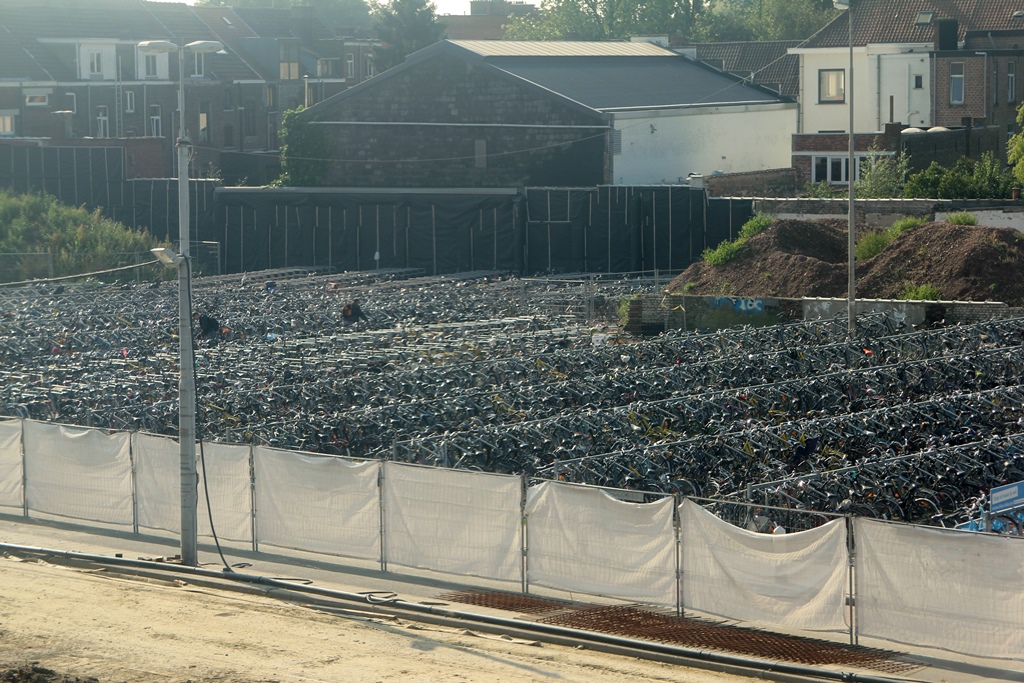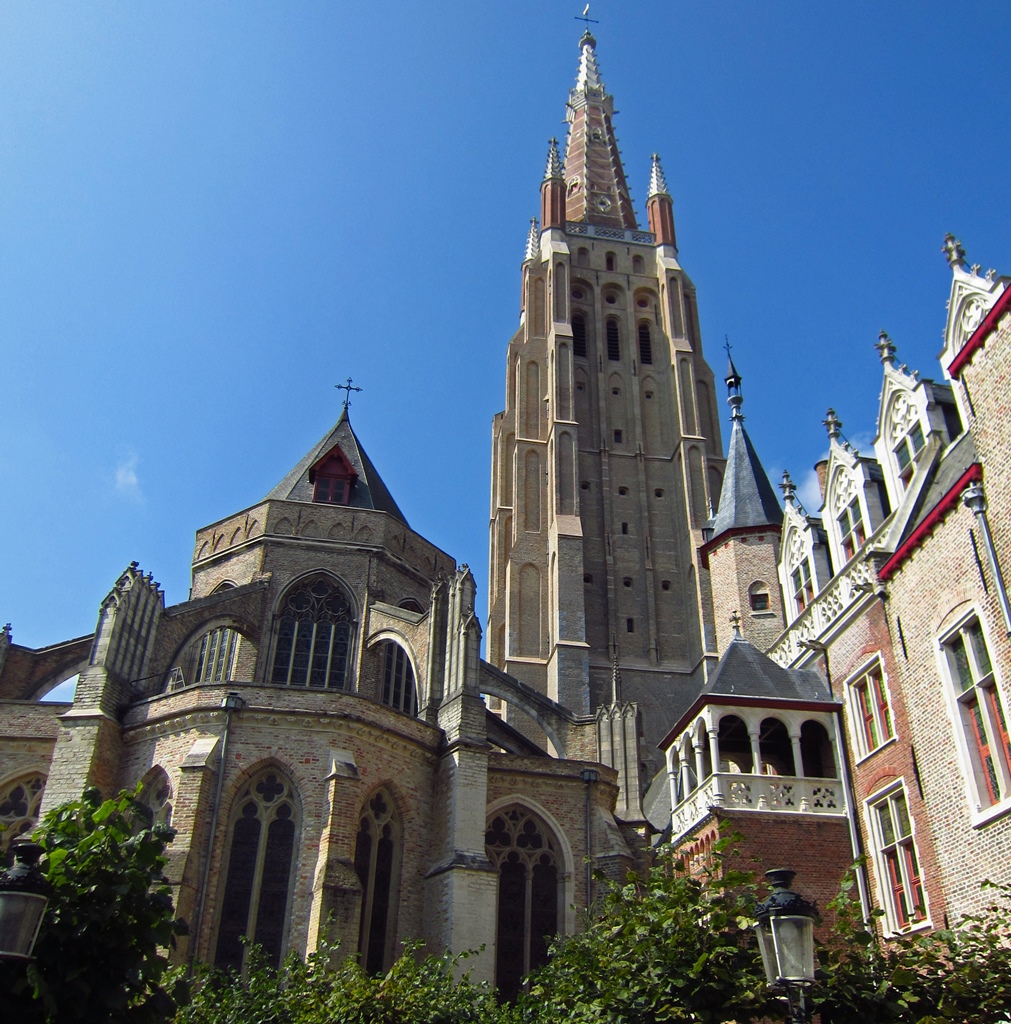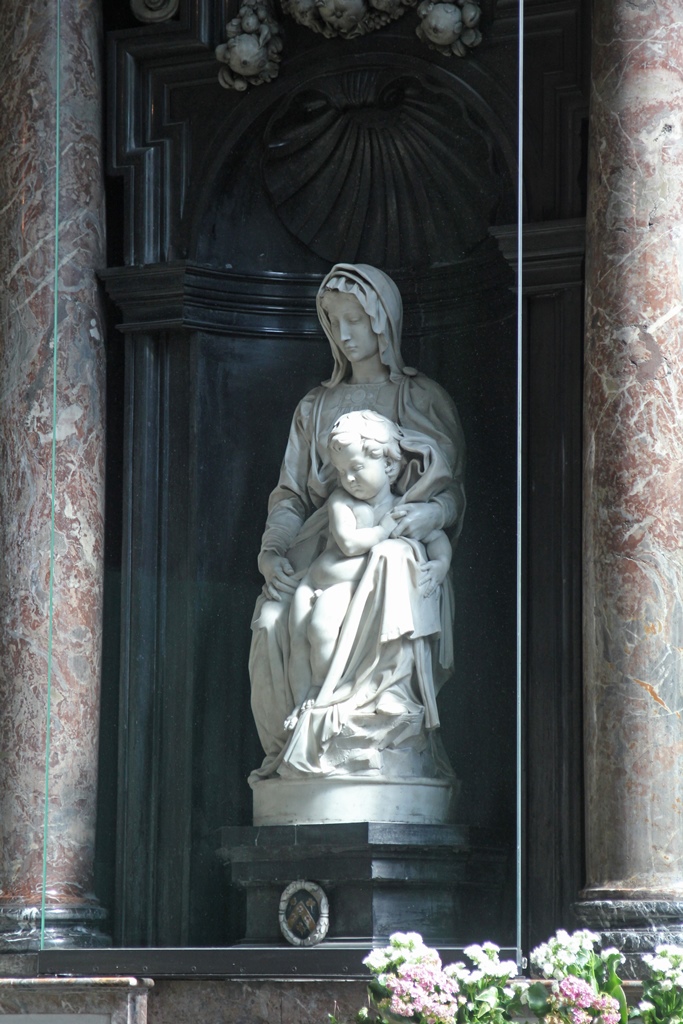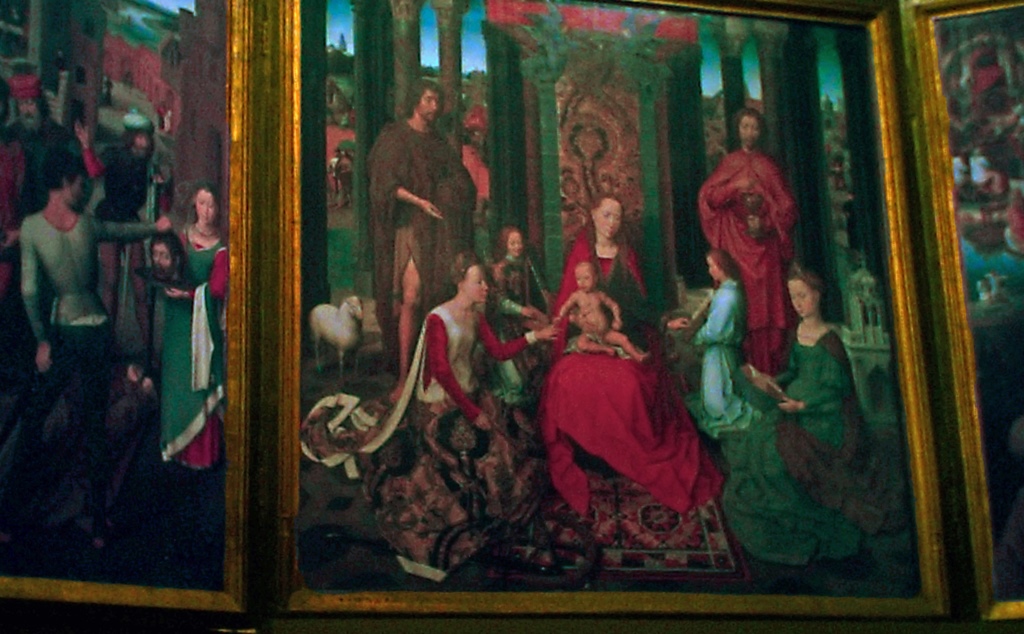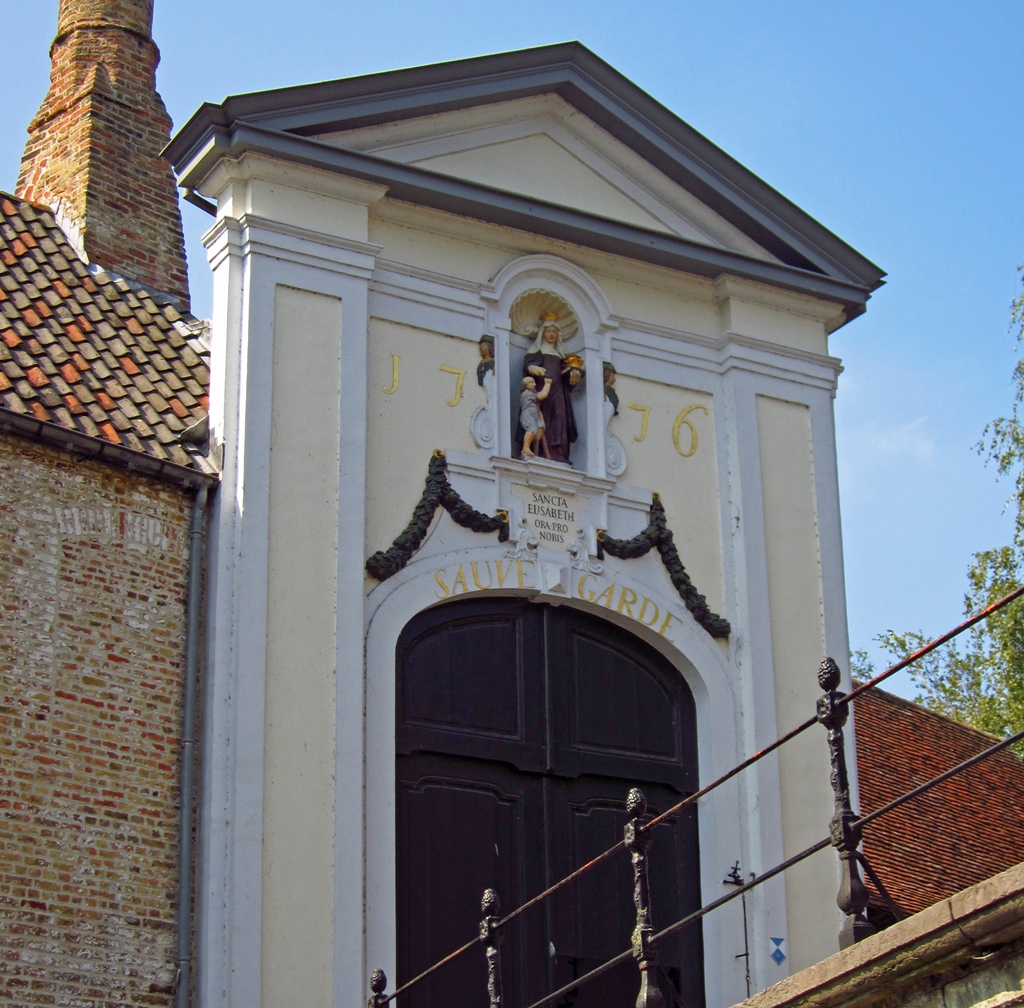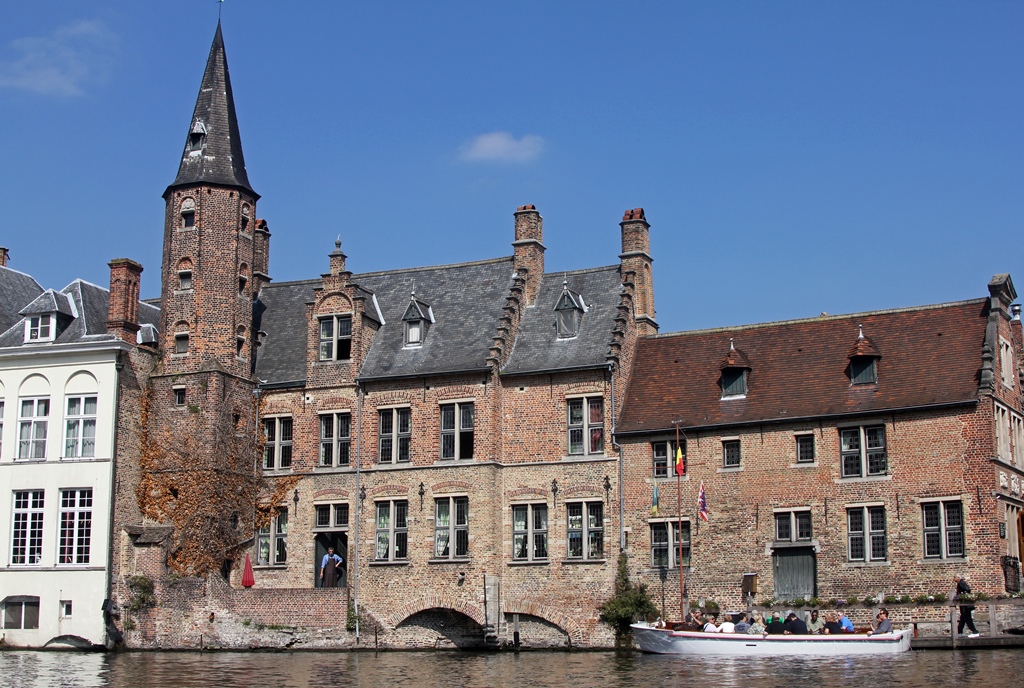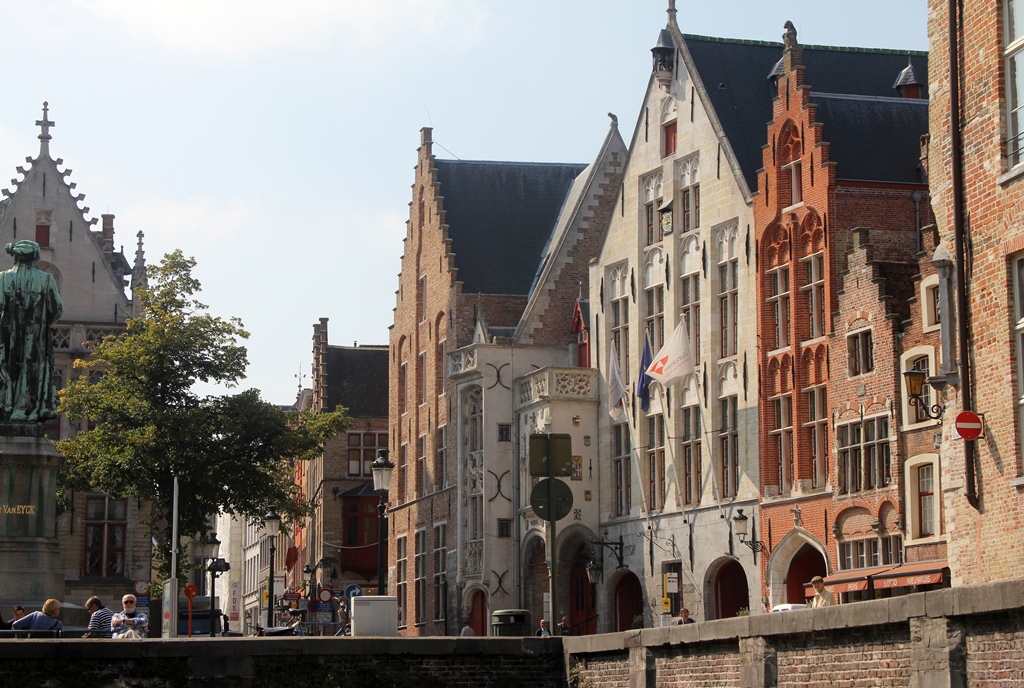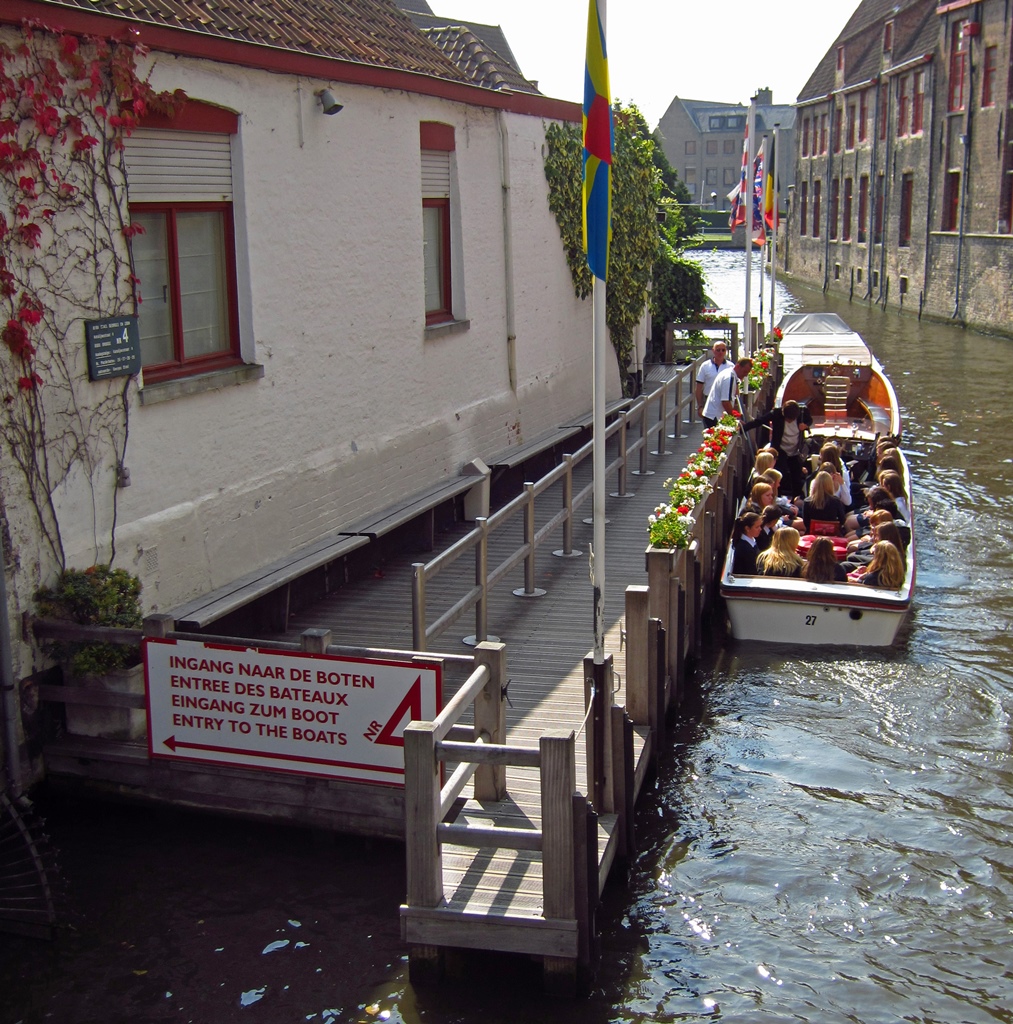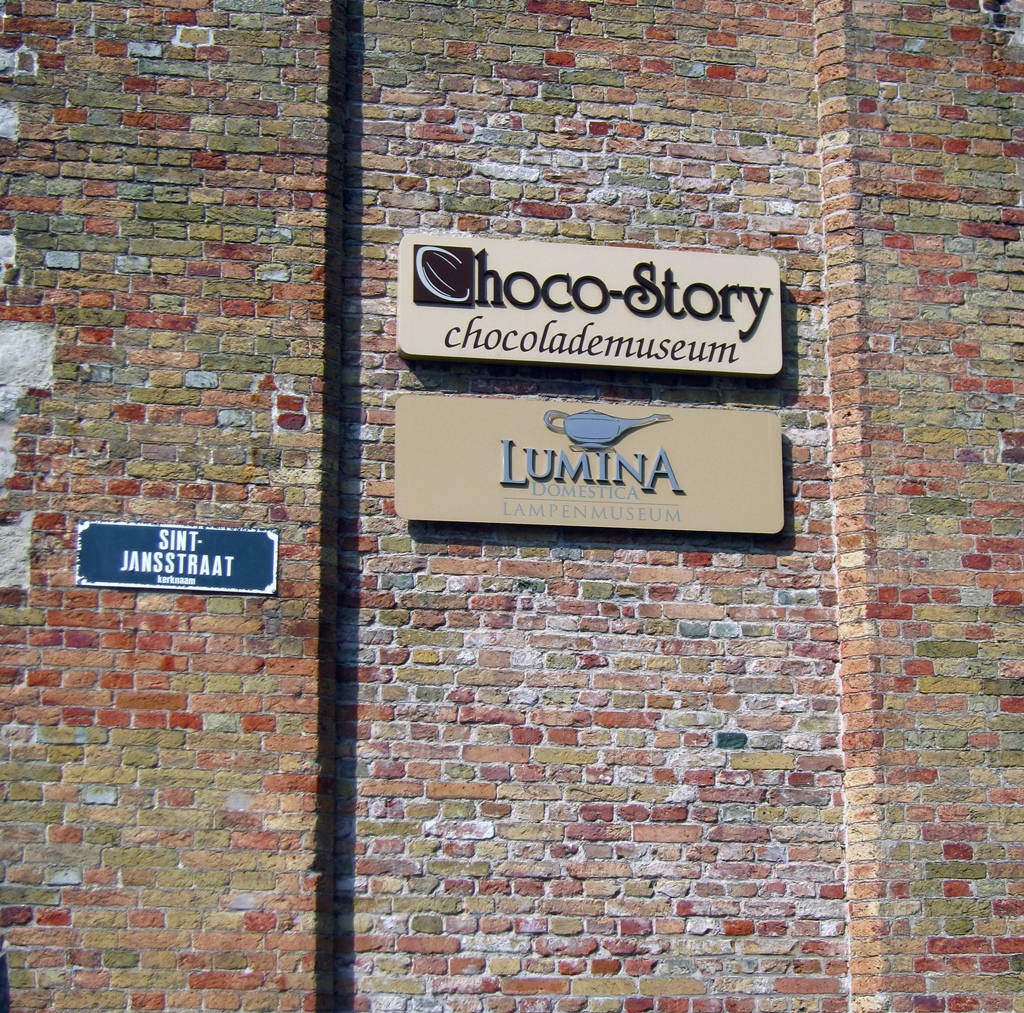Bruges (broozh) is the capital city of the Belgian province of West Flanders. Like
a number of other cities in Europe, Bruges was once wealthy and important, fell upon hard
times, and then found new life as a tourist magnet. Bruges’ years of glory occurred from
the 12th to the 15th Century, when its location and port made it a perfect location for trade
between northern European states and those of southern Europe. With all the money circulating,
Bruges was an early adopter of financial innovations such as letters of credit and bills of
exchange. The city is thought to have been the site of the world’s first stock exchange. But
with its waterway to the sea (the Zwin channel) silting up and competition from other
ports (especially Antwerp) heating up, Bruges faded into something of a backwater. It made a
comeback in production of textiles and (especially) lace, but again its commercial importance
dwindled toward irrelevancy. But toward the end of the 19th Century, travelers found themselves
drawn to the city, largely because of the many attractive buildings constructed during the
city’s golden years, which were well preserved. Bruges launched a concerted effort to attract
tourism, and the rest is (literally) history. A new port (called Zeebrugge) was built,
and in the last half of the 20th Century was expanded into what is again one of the most
important ports in Europe. But the two million annual tourists who visit the city mostly
aren’t interested in the port – they want to see the cool old stuff.
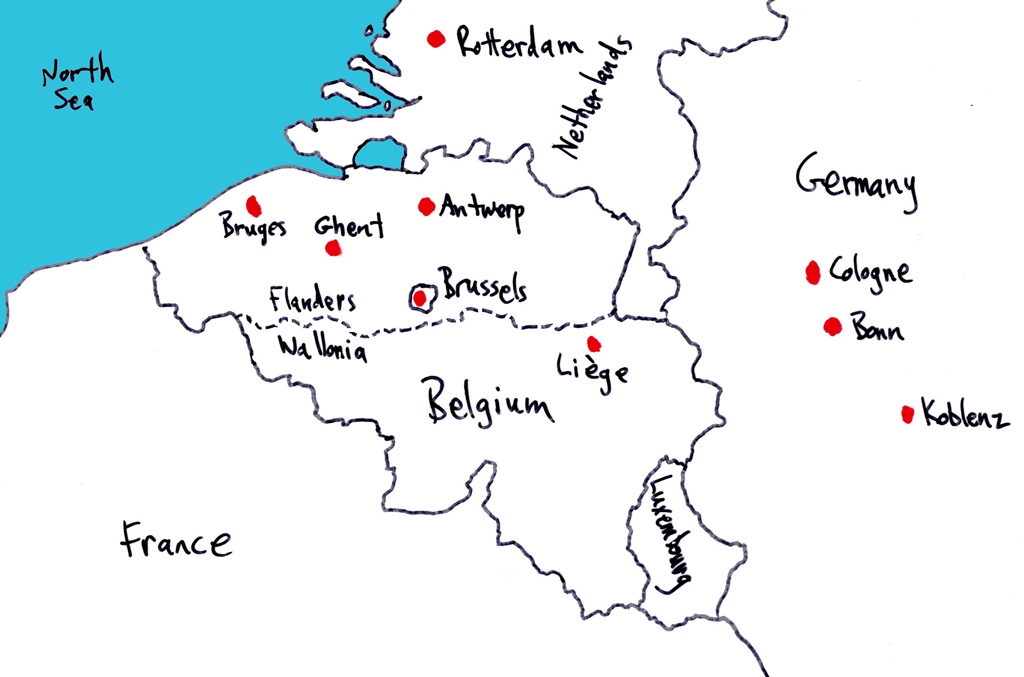
Belgium
And so did we. Travelling to Bruges from Brussels by train is quick and pretty inexpensive.
It takes about an hour. The approximate halfway point is the city of Ghent, which apparently
has tourist attractions of its own, but we didn’t see them. We did see an impressive parking
lot for bicycles adjacent to the train station, though.
Bicycle Parking Lot, Ghent
The Bruges train station is located to the south of the city center, but there are
frequent buses that travel from the station to the city’s central square, a square
called the Markt.
With Bruges being situated in Flanders, it should be noted that the language of choice
is Flemish (basically Dutch). This results in many place and street names that are
difficult to read and pronounce for people from outside the area. Such people
generally refer to the city by its French name (Bruges), rather than its local name
(Brugge). (It doesn’t help that the Flemish name sounds like an antique
automobile horn (broogah)). You may have noticed that I’m following this
convention as well (apologies to the people of Flanders).
The Markt is a large square that is dominated by two structures – the neo-gothic
Provincial Court Building (built in 1878), and a 270-foot tower called The Belfry,
which is considerably older (more on The Belfry later). The Markt is also
surrounded by picturesque shops and restaurants.
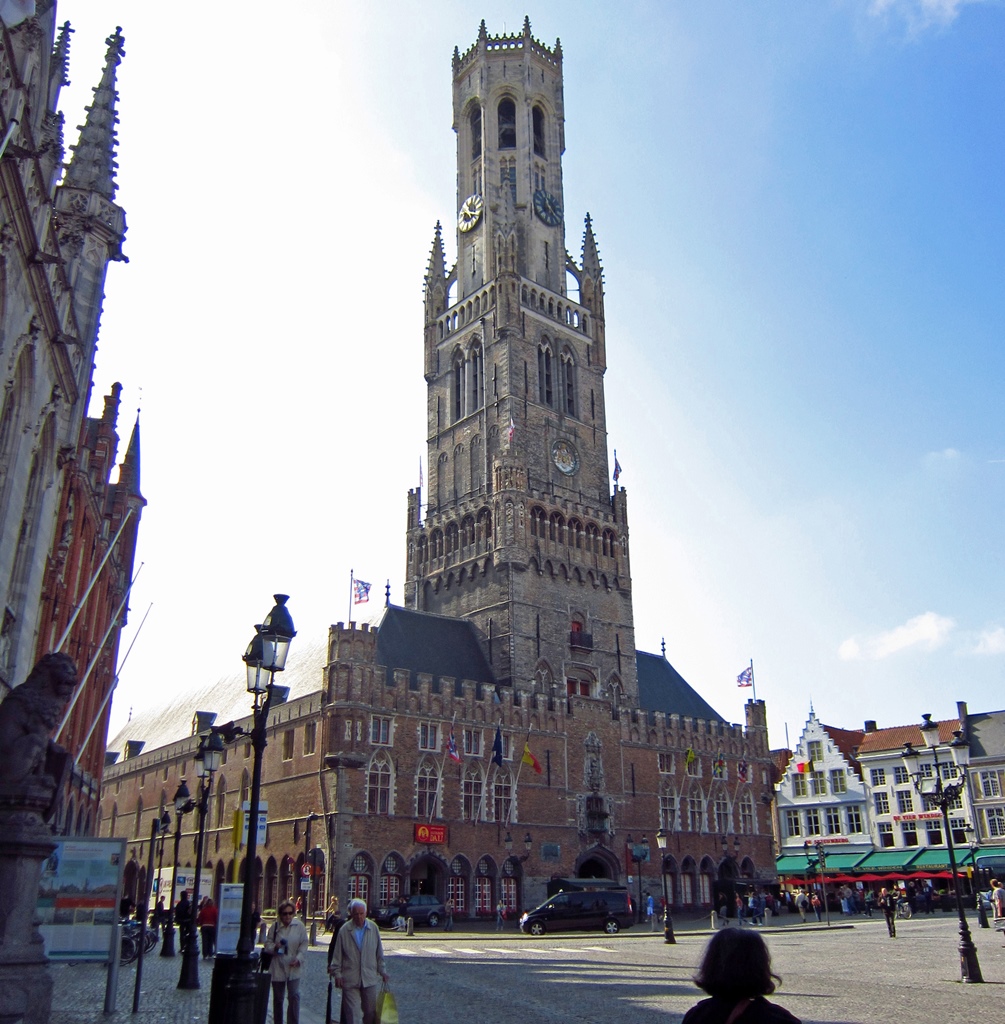
The Belfry
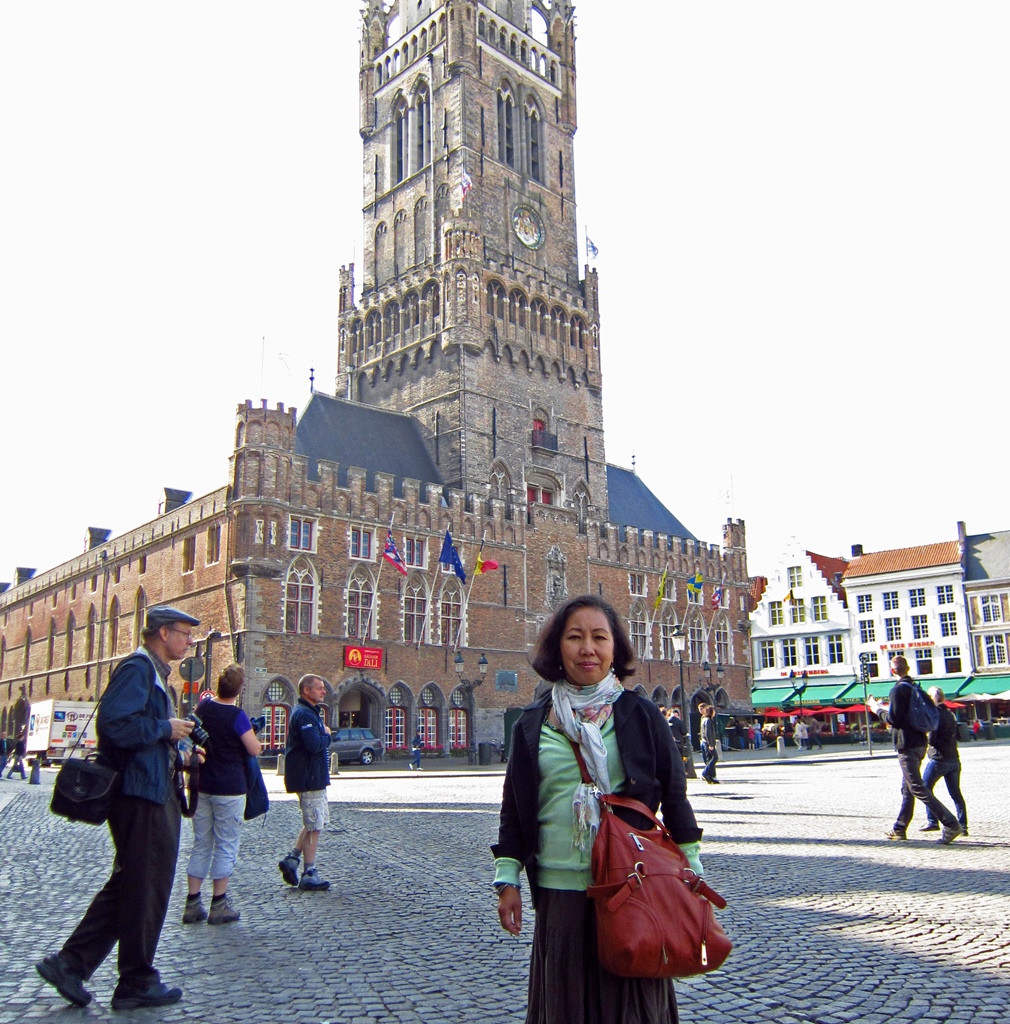
Bob Photobombing Nella and Belfry
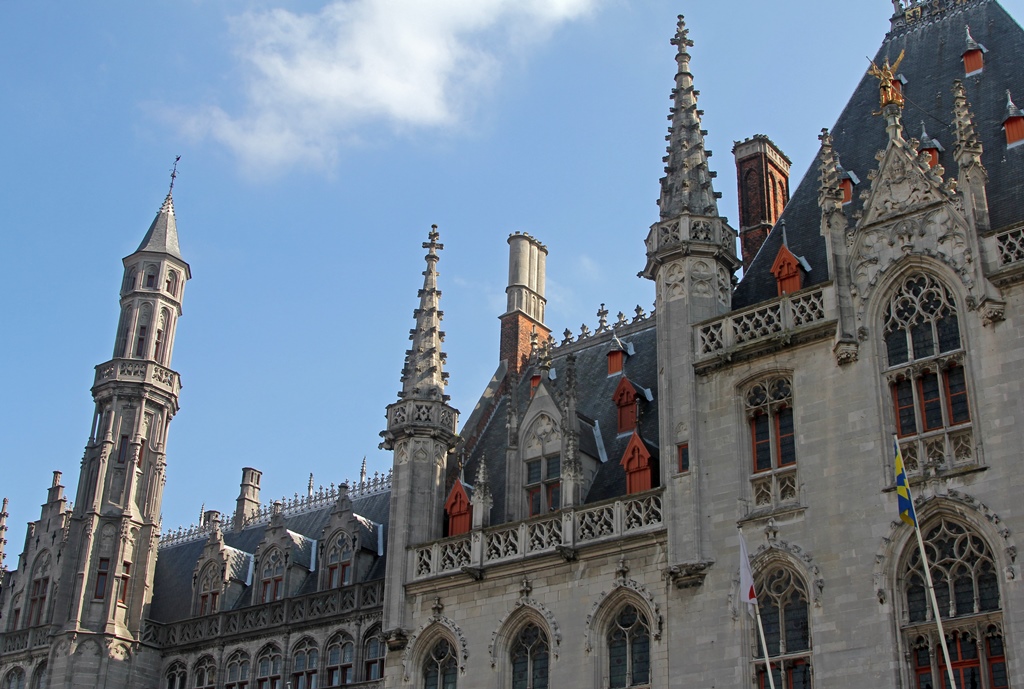
Provincial Court Building
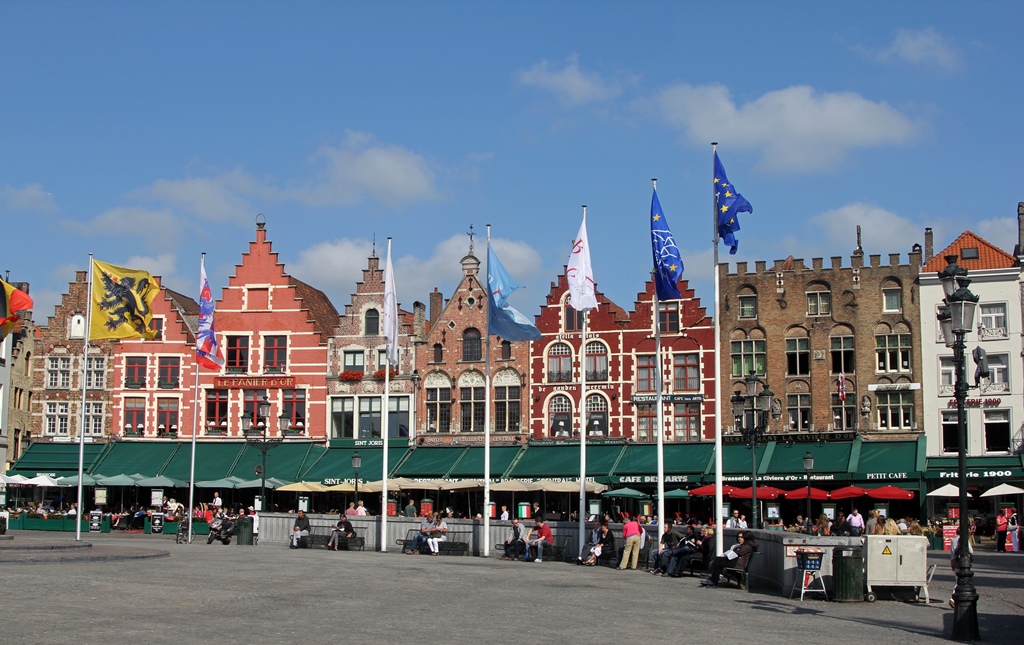
Markt Square Restaurants
With our time limited, we didn’t linger in the Markt for very long – we headed
out of the square for the first attraction we wanted to visit, the Groeninge
Museum. On the way we encountered one of the canals of Bruges, called the
Dijver canal. The canals have caused some to label Bruges "The Venice
of the North". As readers of this site are aware, we’ve visited "The Venice of
Italy", and we found the Italian canal system to be much more extensive. The
Belgian canals are undeniably pretty, though.
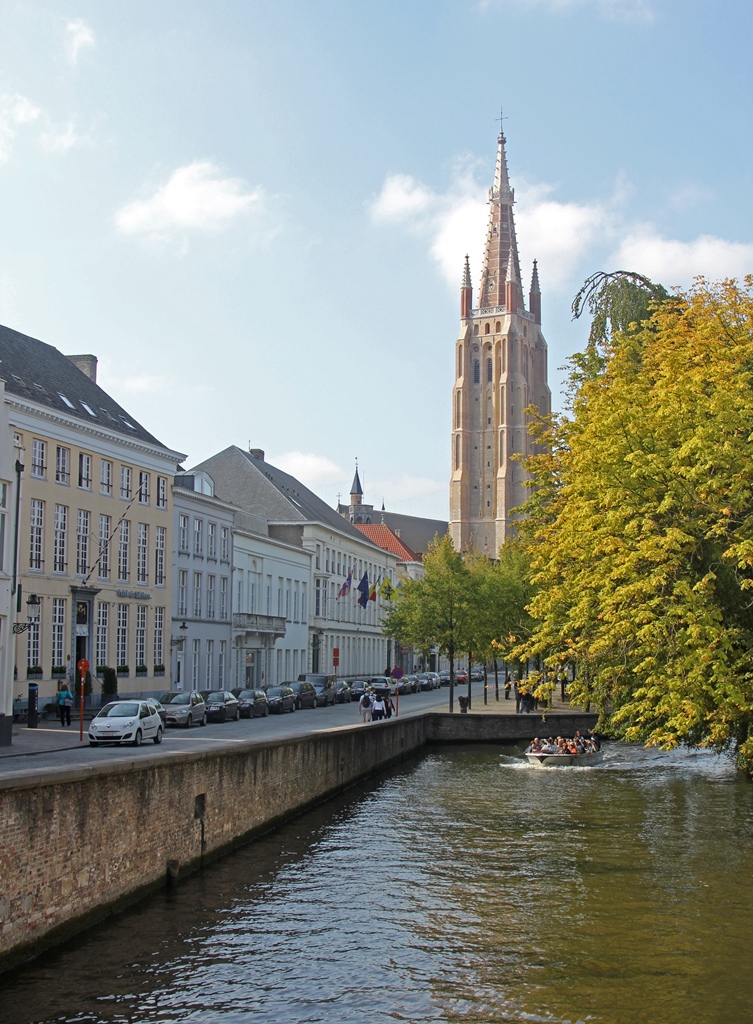
Dijver Canal and Tower, Church of Our Lady
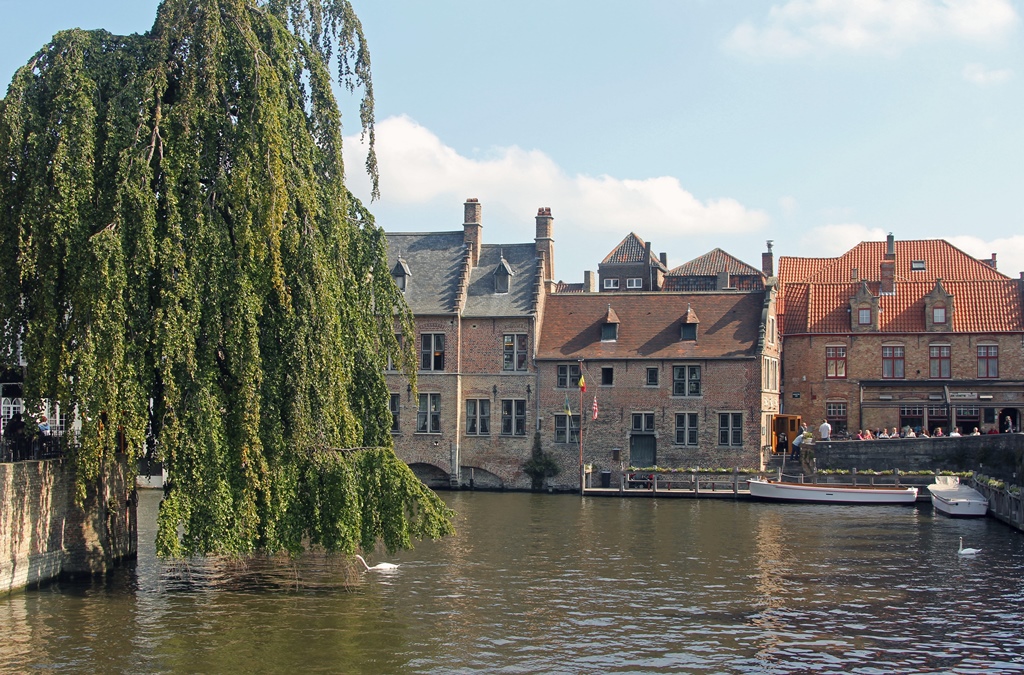
Rozenhoedkaai Area
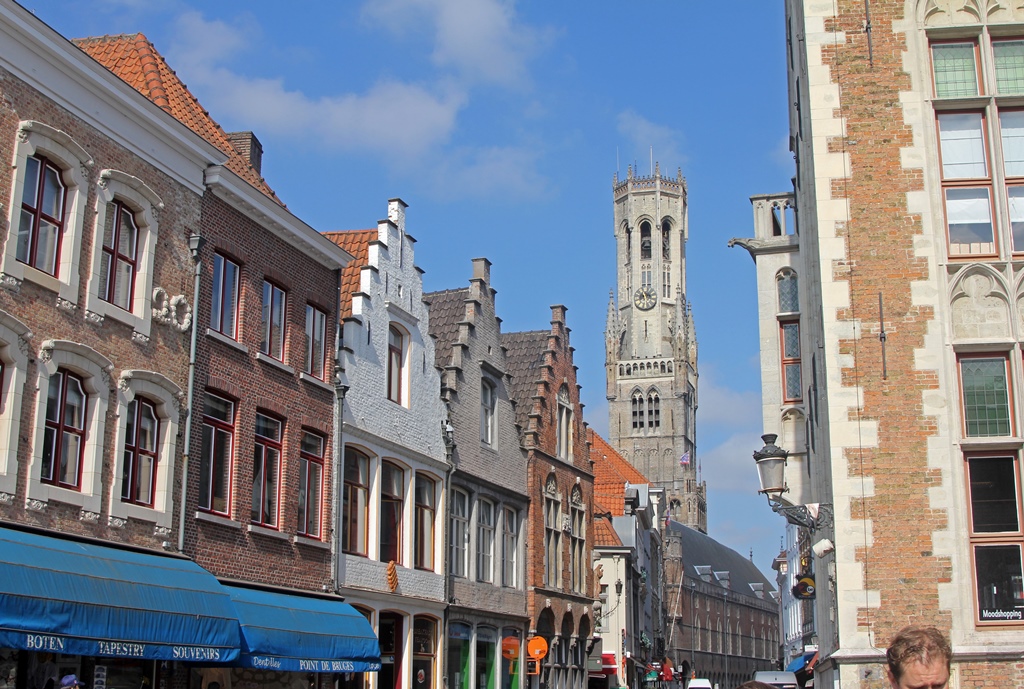
Belfry and Wollestraat
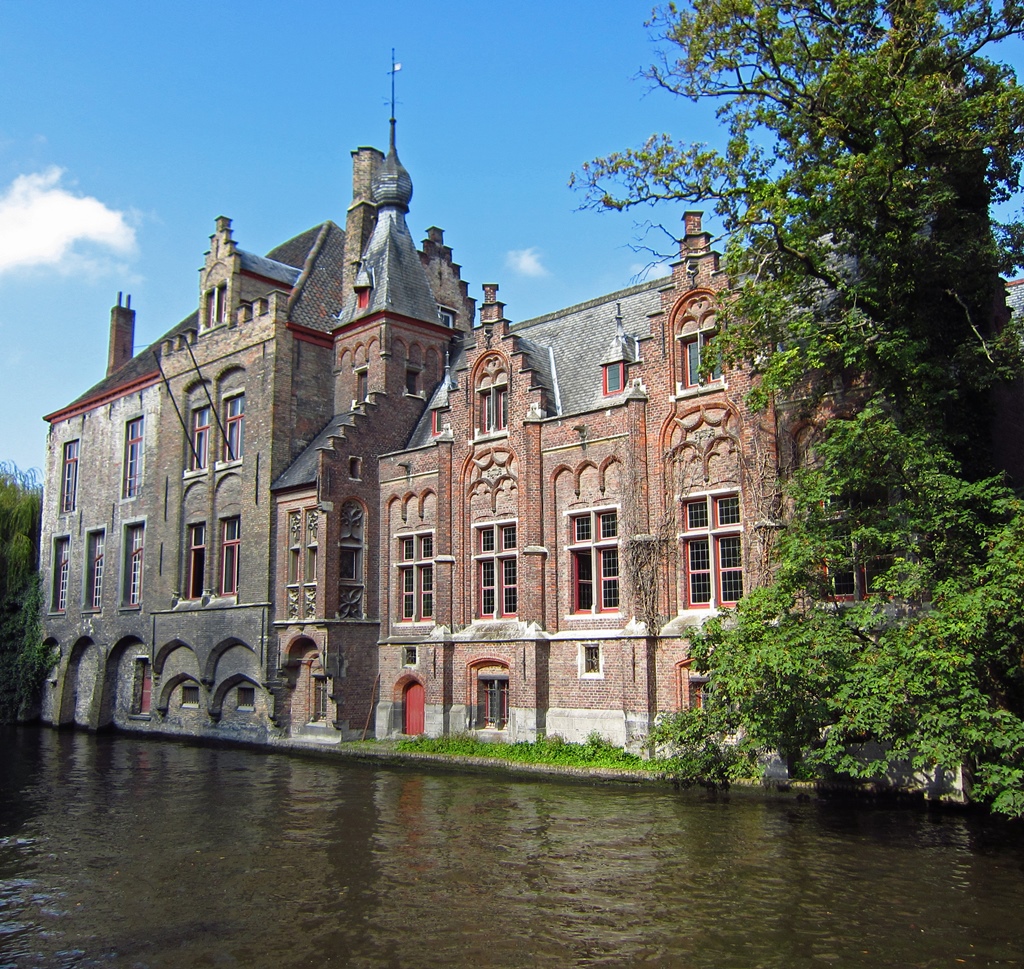
Building on Dijver Canal
We’d love to show you more of the Groeninge Museum – they have an impressive collection
of Flemish art. But they also have a strict no-photos rule, so you’ll have to take our
word for it (or look elsewhere – the paintings are all over the Internet). Here are a
couple of pictures taken outside the museum:
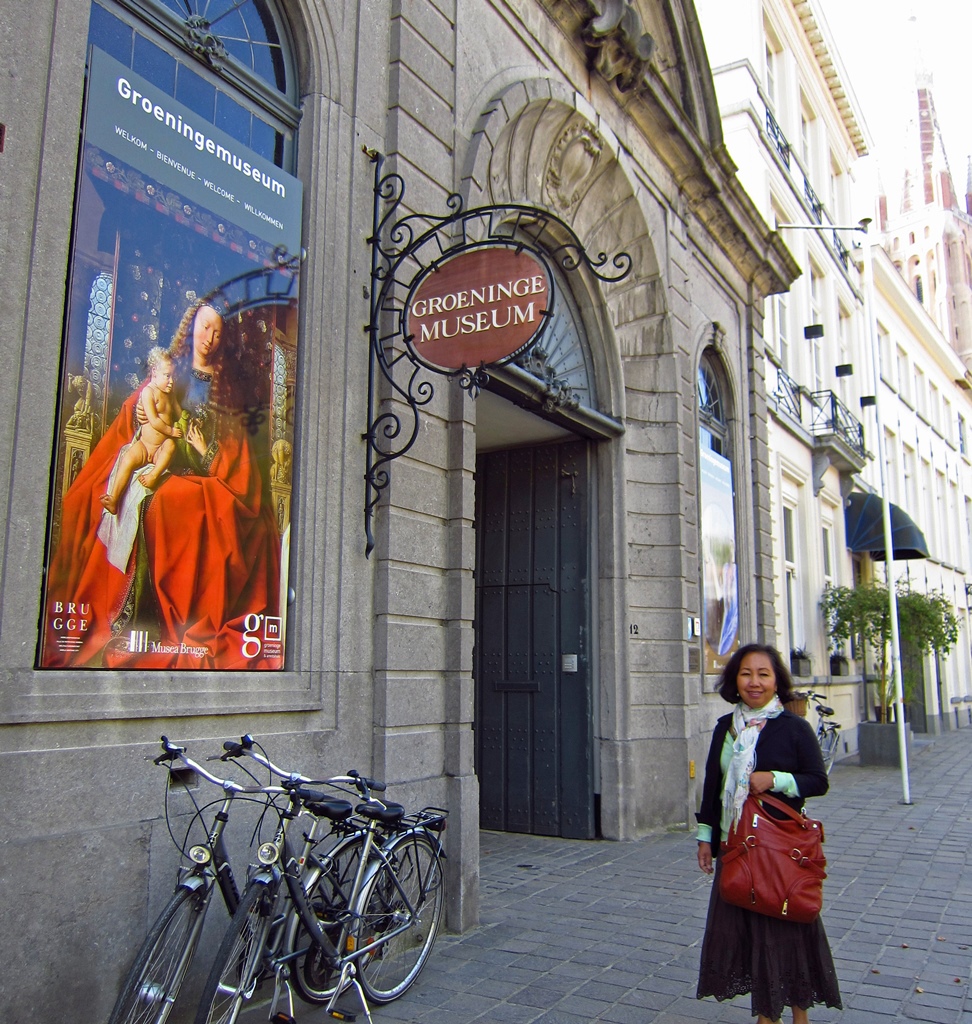
Nella at Groeninge Museum
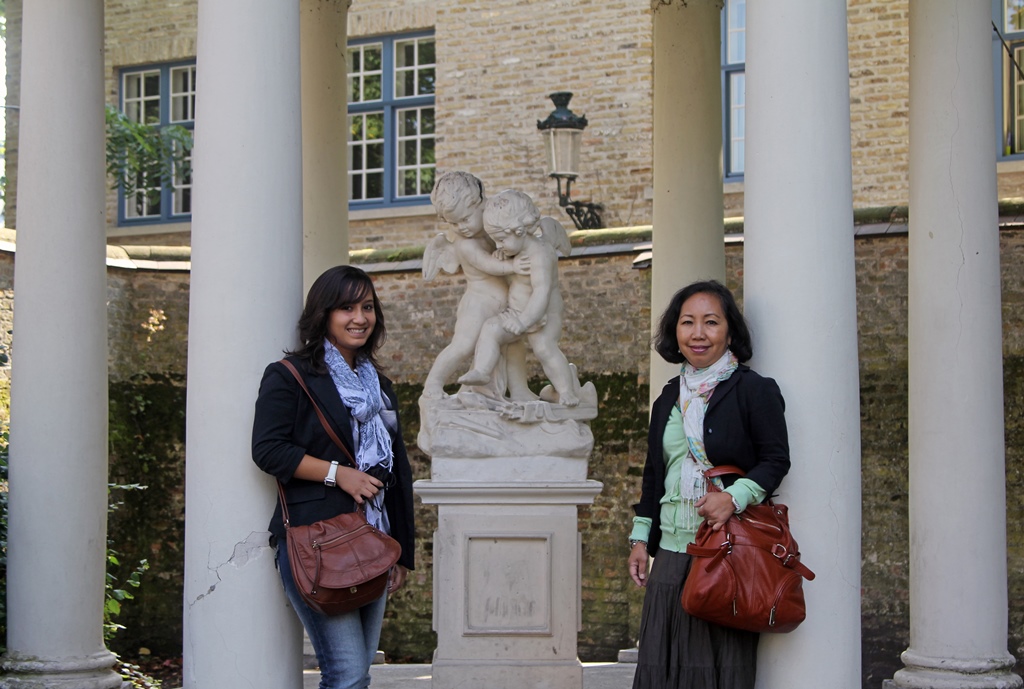
Statue Outside Groeninge Museum
Unmissable from the Groeninge Museum is the 400-foot tower of the nearby Church of
Our Lady, a church that we decided to visit next. To get to the entrance we
crossed a canal (a jog in the Dijver) using a bridge called the Bonifacius Bridge
and passed through an archway into a courtyard shared by the church and the
Gruuthusemuseum, a 15th Century mansion in which tapestries, furniture and
coins are displayed.
Church of Our Lady
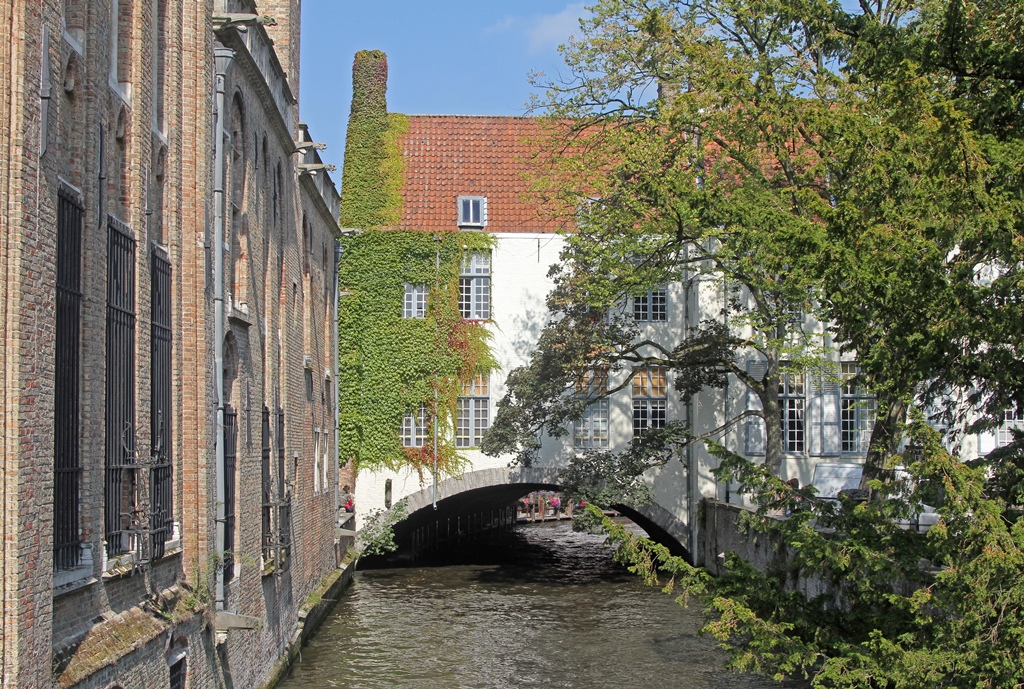
Canal and Arch from Bonifacius Bridge
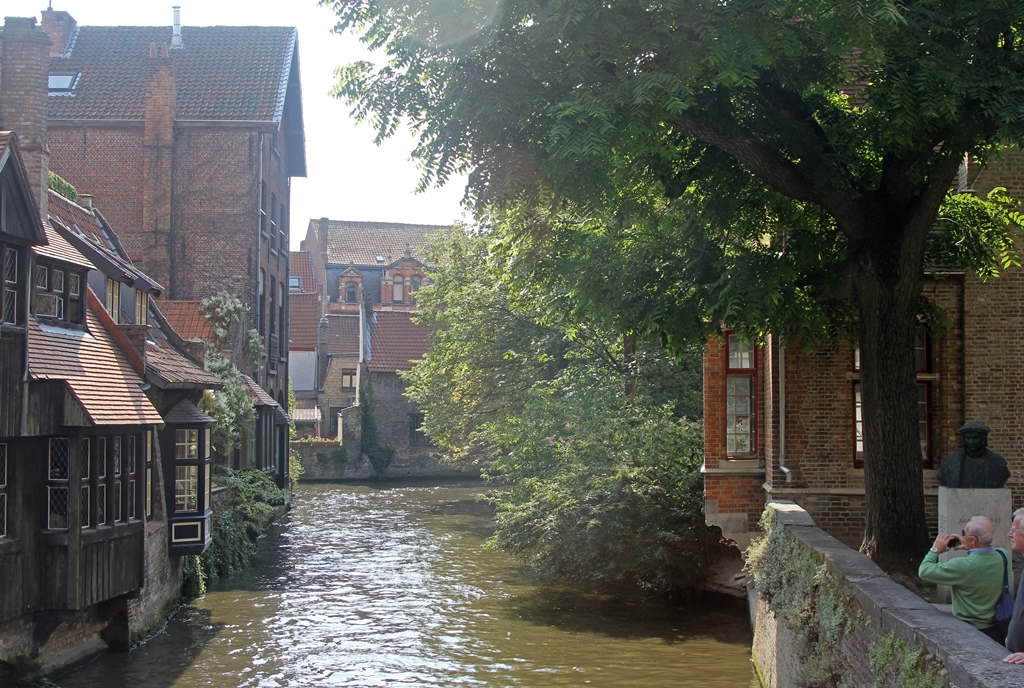
Canal from Bonifacius Bridge
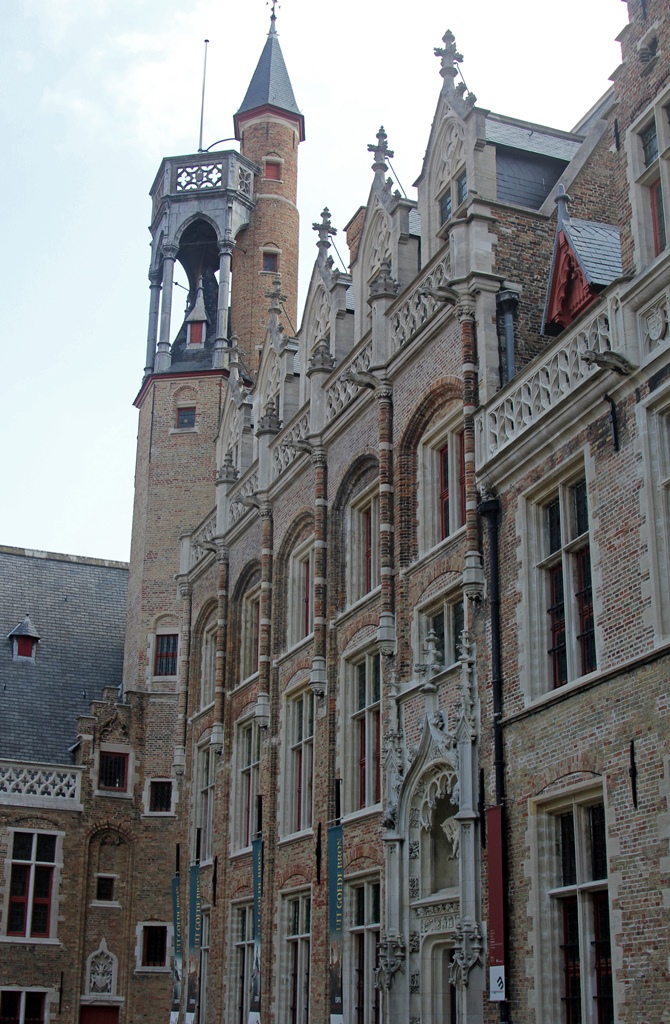
Gruuthusemuseum
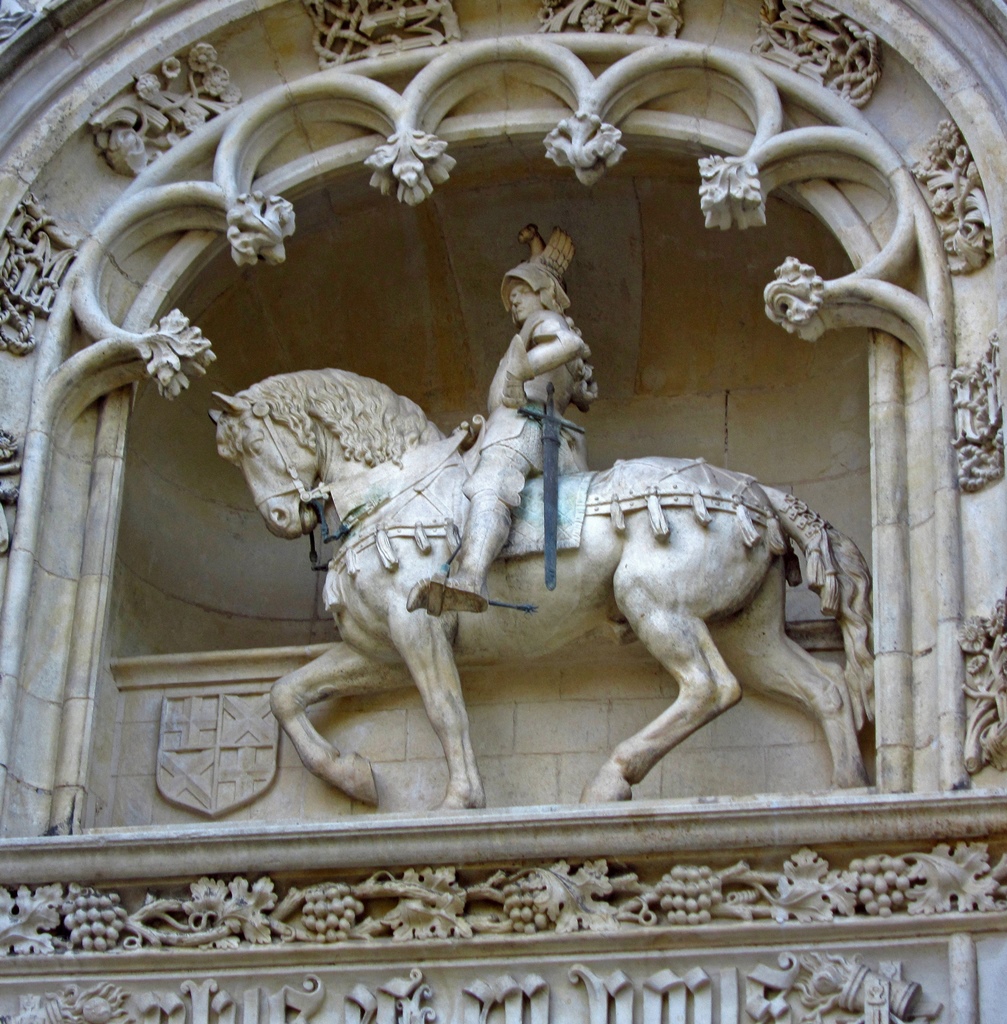
Detail, Gruuthusemuseum
We didn’t visit the Gruuthusemuseum, heading straight for the entrance of the church.
The Church of Our Lady (Onze-Lieve-Vrouwekerk; I have no idea how to pronounce this)
was built in the 13th, 14th and 15th Centuries and has a tower that is the tallest structure
in the city (and actually the second-tallest brickwork structure in the world). The inside
of the church was not very large but had some nice touches.
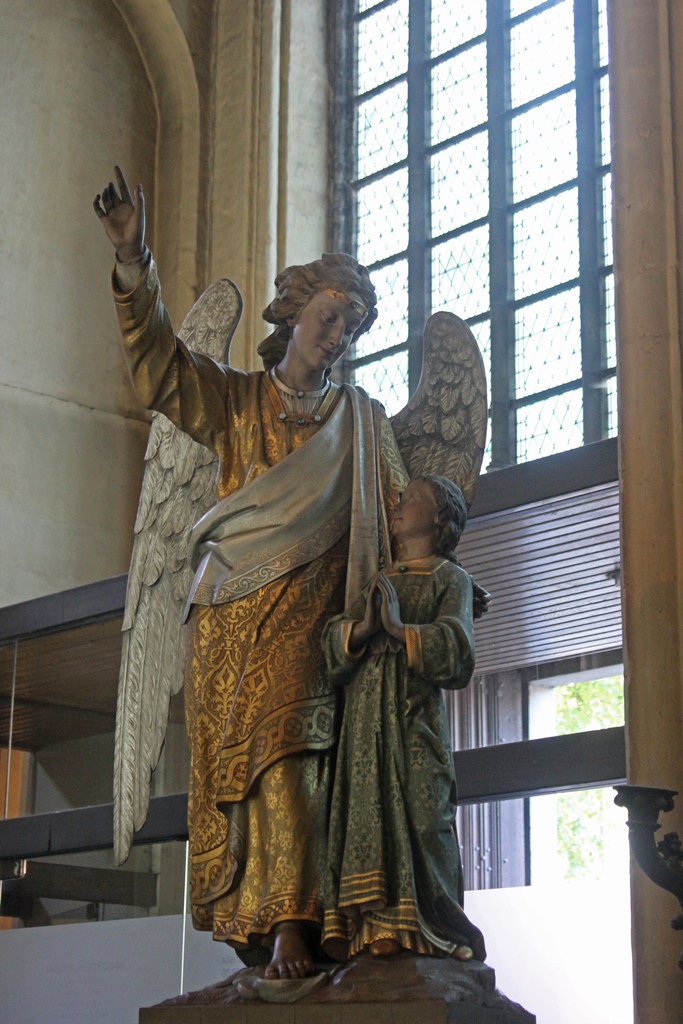
Angel with Child
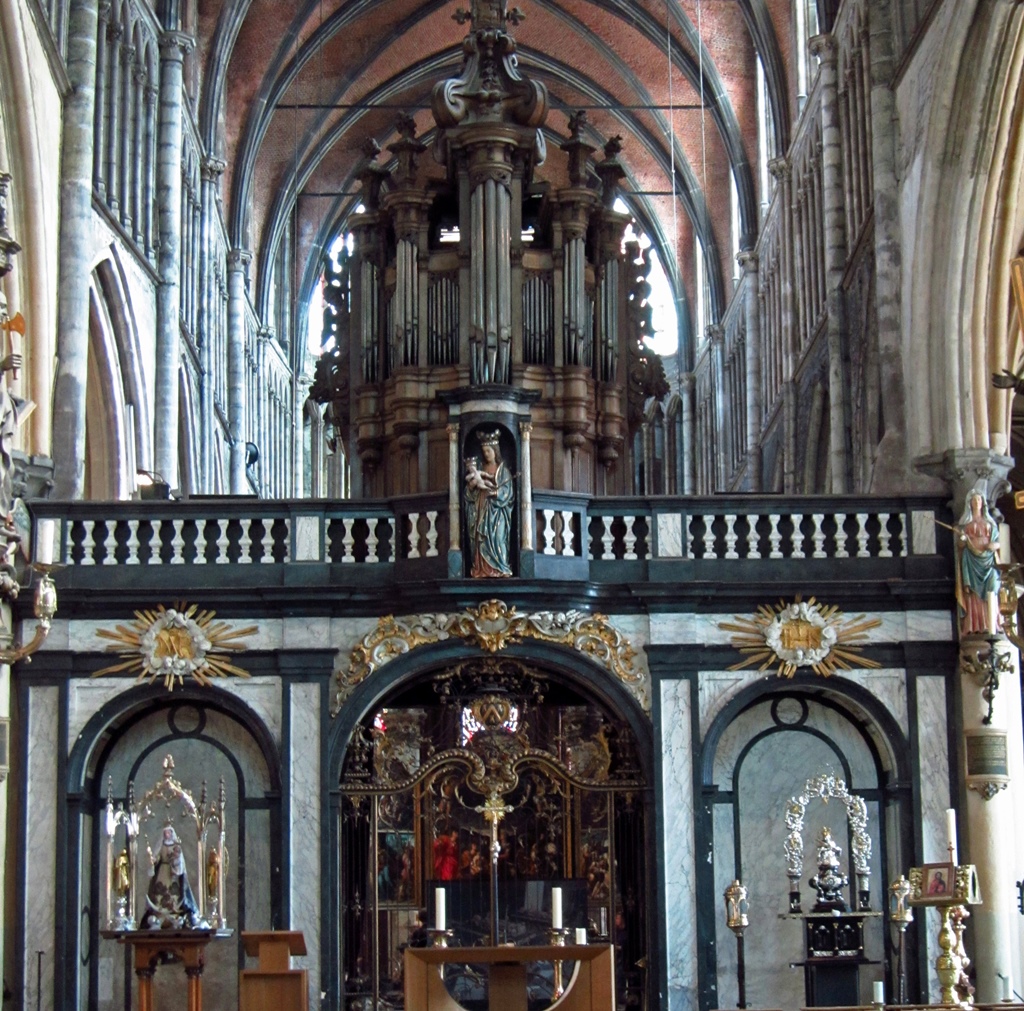
The Nave
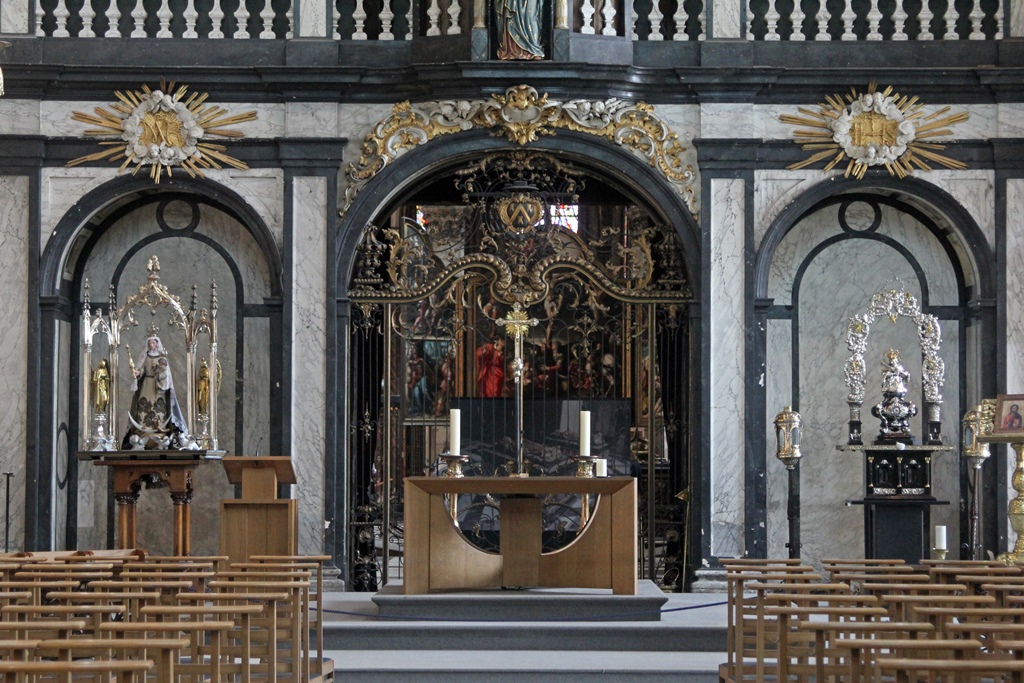
Choir Screen
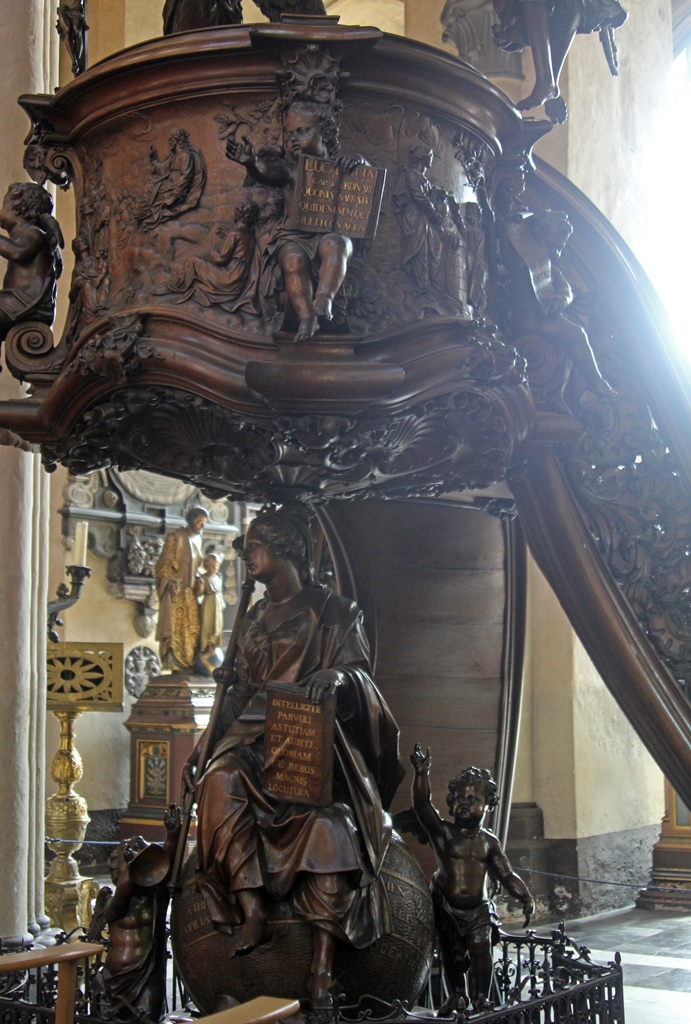
Pulpit
A good portion of the church was only open to paying customers. This section
had some nice stained glass and some significant tombs (such as that of Charles
the Bold). And also another no-photography rule. The church’s most famous
possession is also in this section. This is a Madonna and Child statue that
was completed by Michelangelo around 1504. Both Napoleon and the Nazis thought
this statue worthy of looting, but in each case it was returned to its
home. Here’s a picture that was taken accidentally:
Madonna and Child (Michelangelo, ca. 1504)
Across the street from the church is the St. John’s Hospital, which is no longer
used as a hospital (though it was until the 1970’s). Instead it is a hospital museum
which gives visitors an idea of what hospitals were like all the way back to the
11th Century, when St. John’s was first established. The building also contains a
tiny museum devoted to the artist Hans Memling, displaying six of his works. Again,
we weren’t allowed to take any pictures. If you’d like one better than the
following, you’ll need to look around a little on the Internet:
The Mystic Marriage of St. Catherine (Hans Memling, 1474-79)
Next to the hospital was a canal with a small landing from which tour boats
periodically departed. This sounded like fun, so we looked for the ticket
office. We found a cupcake shop in the process, but eventually procured
some tickets. While waiting for the boat we had a good look at the hospital
across the water.
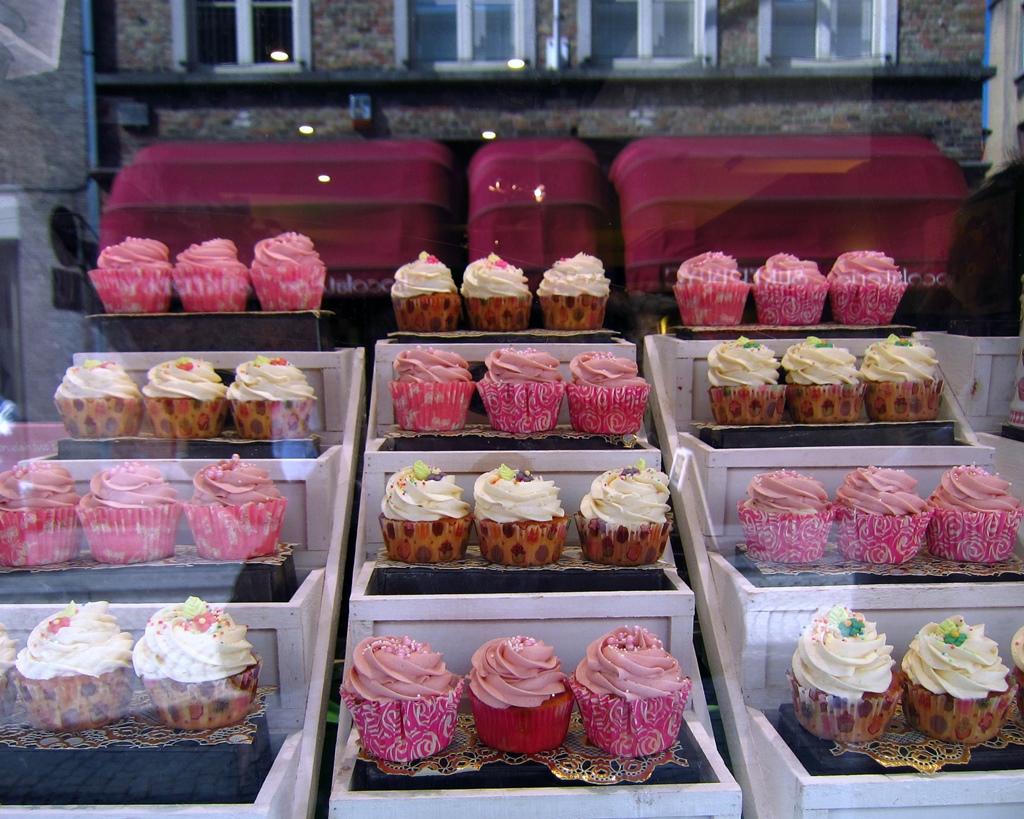
Cupcakes

St. John's Hospital
Our boat eventually showed up and started by taking us southward, away from
the city center. We saw a number of sights in this direction, including the
entrance gate to the Béguinage of Bruges, a sort of a monastery for women.
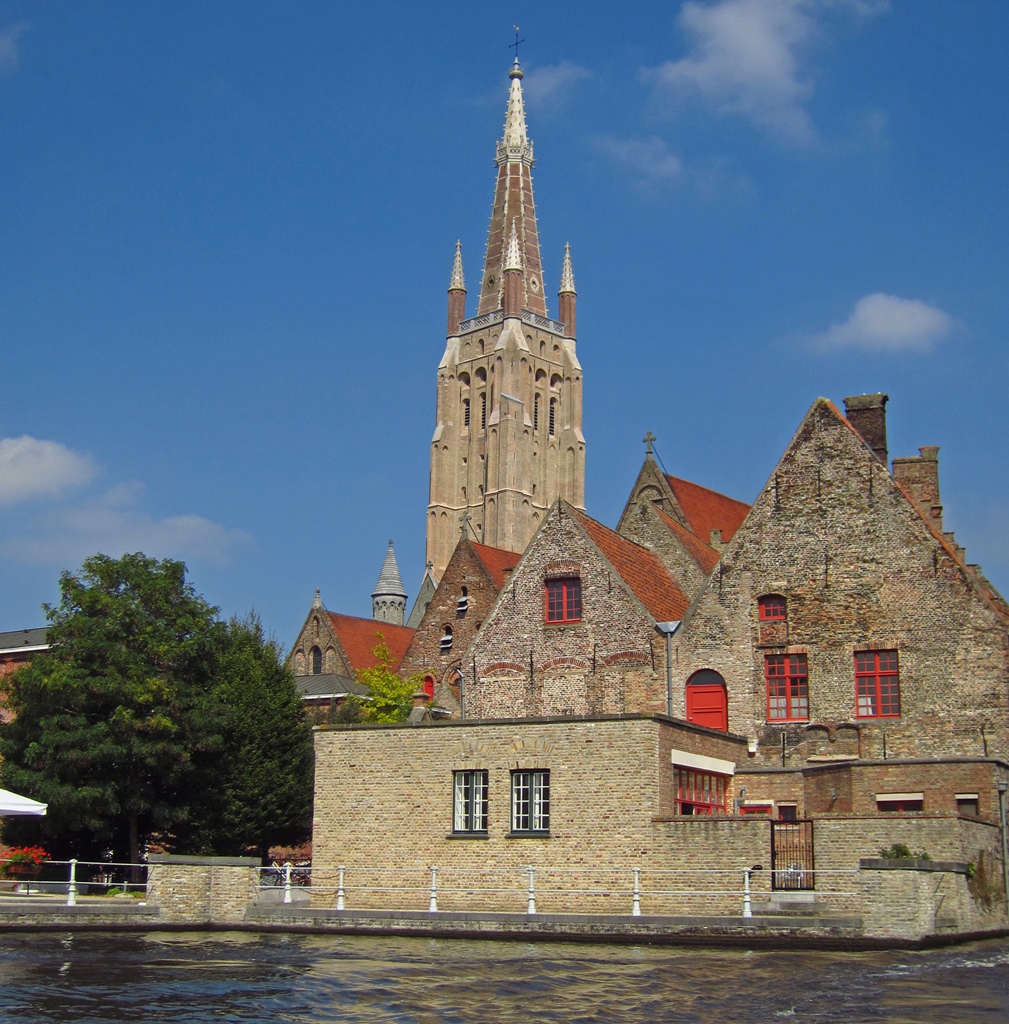
Tower, Church of Our Lady
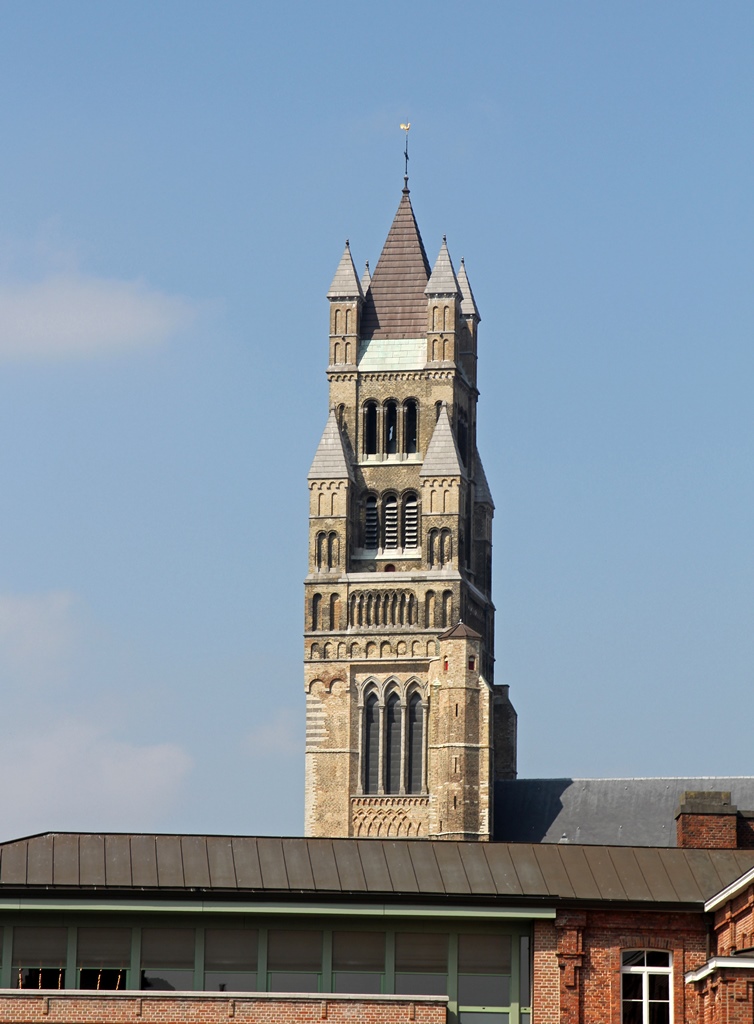
Tower, St. Salvator's Cathedral
Entrance Gate to Béguinage
Eventually we turned around and headed back the way we’d come, passing under the
bridge next to the landing area, and then under the bridge we’d crossed to get to
the church.

Crossing Under Mariastraat Bridge

Turning Toward Bonifacius Bridge
We found ourselves on the Dijver canal, on which we passed the canal side of the
Gruuthusemuseum, eventually reaching a turning area called the Rozenhoedkaai.
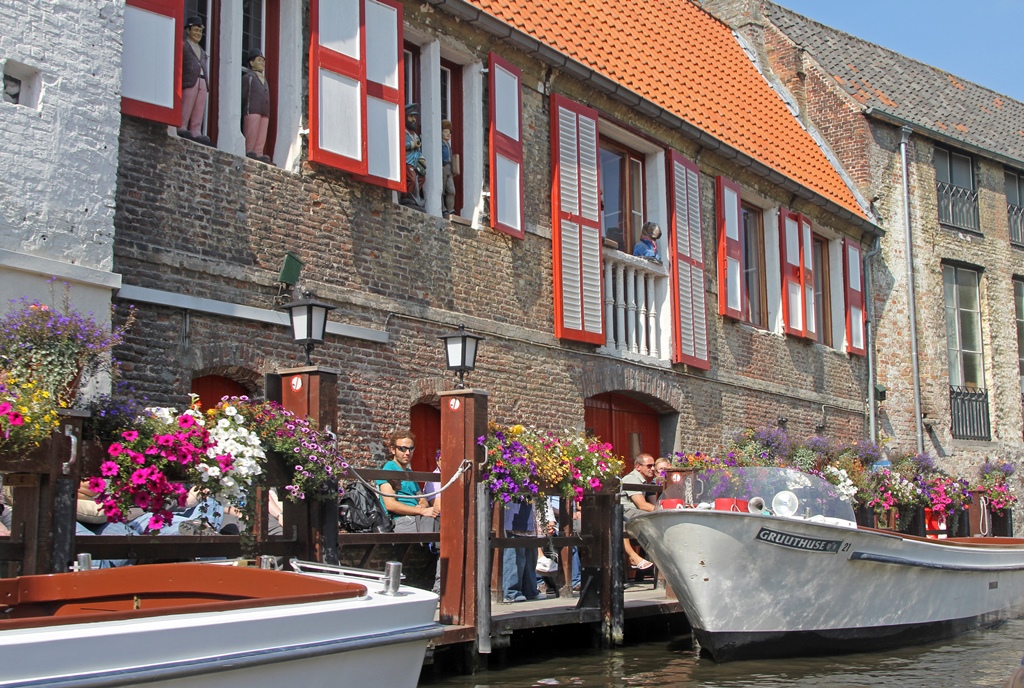
Boats at Gruuthusemuseum

Along Dijver Canal
Rozenhoedkaai Area
Another jog to the left brought us to a canal called the Groenerei.
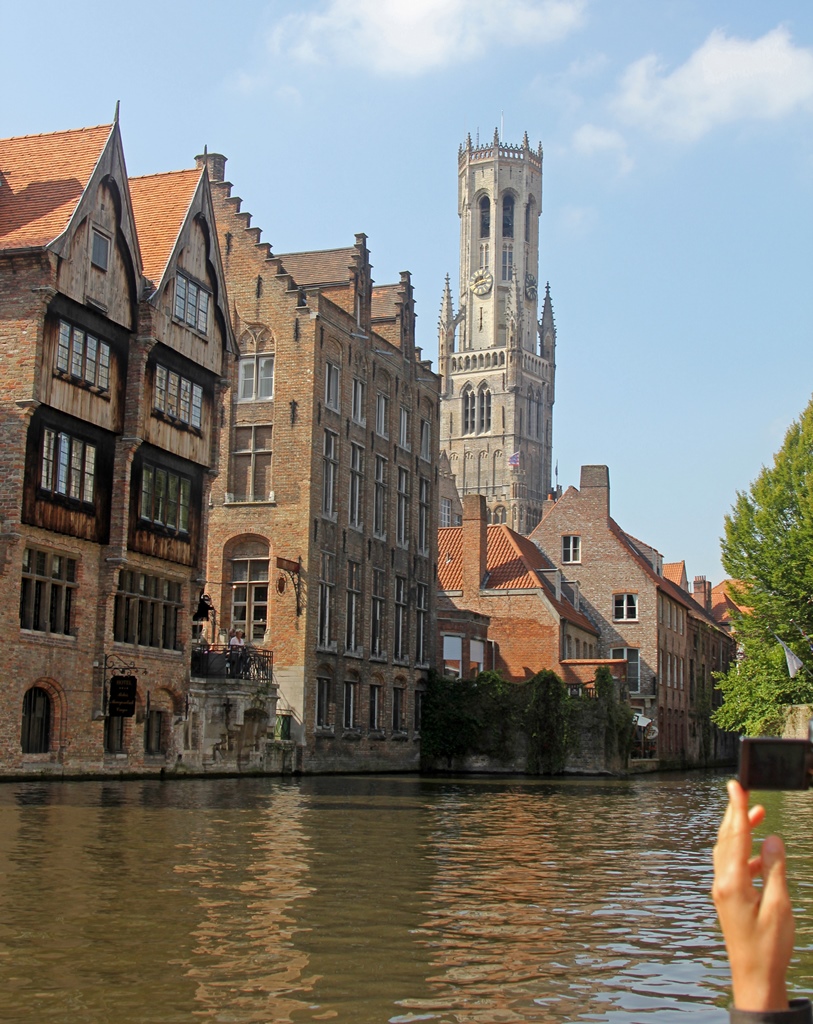
Relais Bourgondisch Cruyce Hotel and Belfry
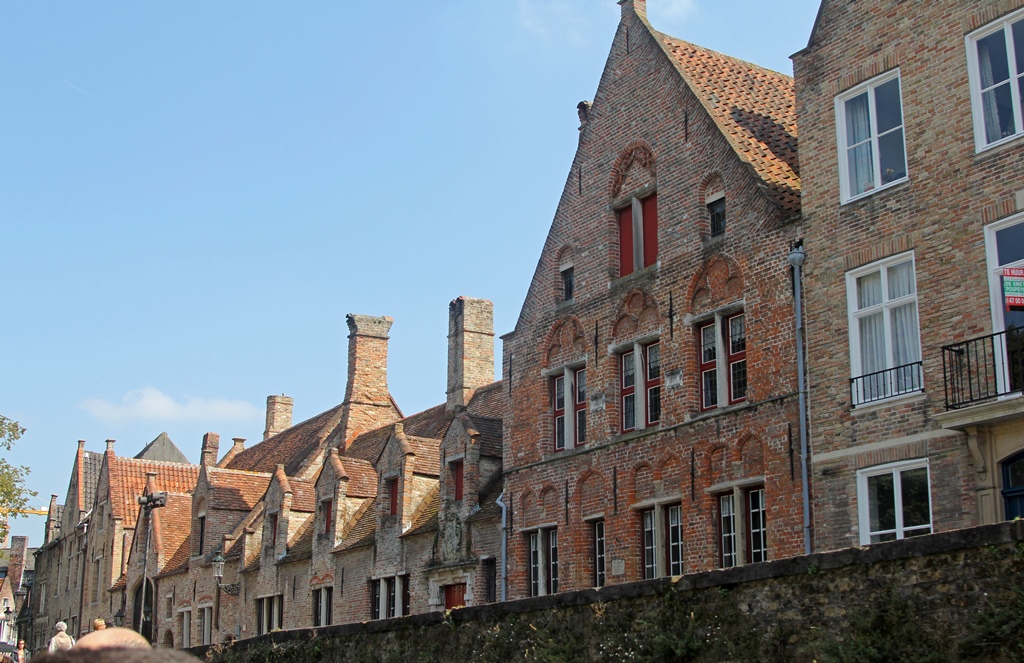
Buildings Along Groenerei Canal
A turn to the left put us on a canal called Sint-Annarei, and another left
put us on the Spinolerei canal. The end of the Spinolerei brought us to a
building called the Poortersloge (yes, this means "porter’s lodge") and the
end of the line.
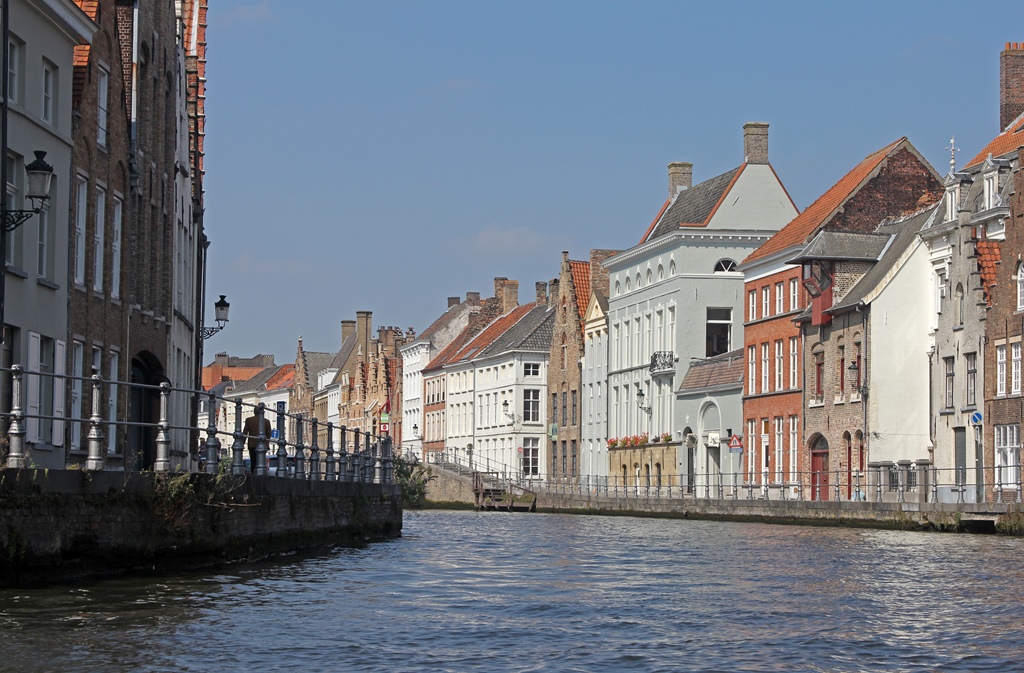
Sint-Annarei
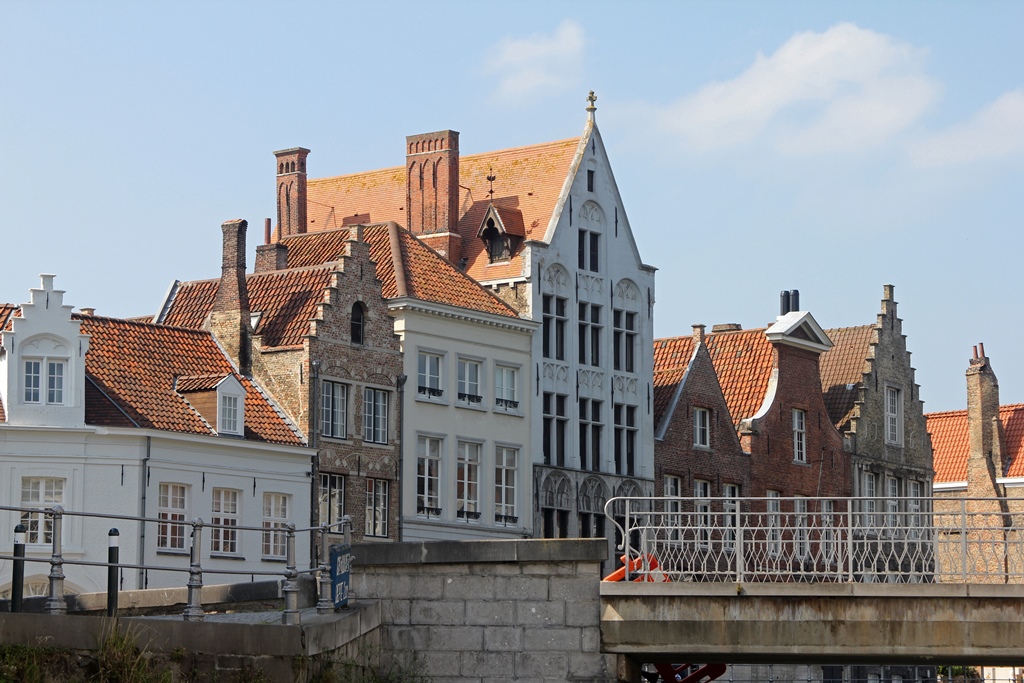
Buildings Along Sint-Annarei
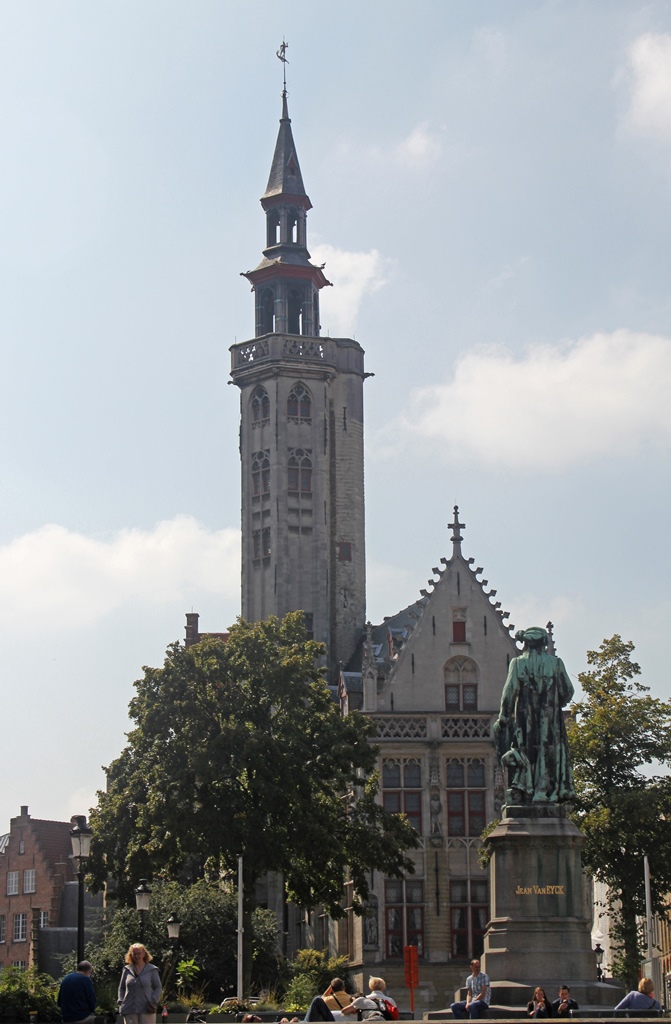
Poortersloge

Spinolarei Canal and Poortersloge
Buildings at End of Spinolarei Canal
Our boat made a U-turn and went back the way it came, eventually returning to the
original boat landing.
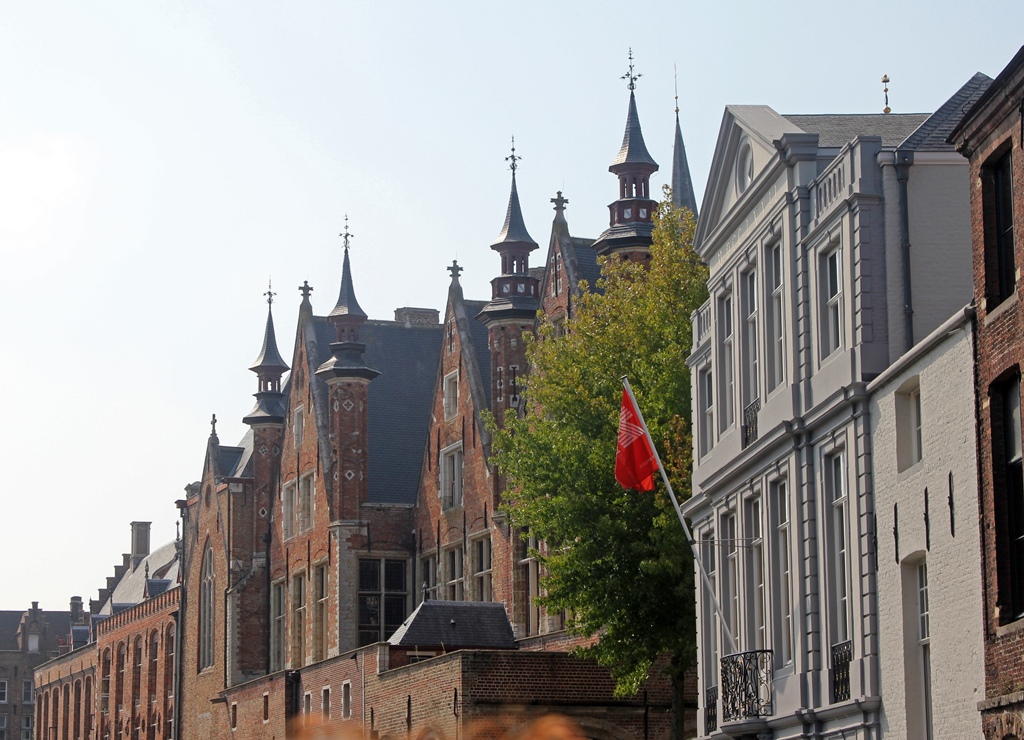
Manor House of the Brugse Vrije

Relais Bourgondisch Cruyce Hotel and Rozenhoedkaai Area
Boat Landing
We disembarked and headed back in the direction of the Markt square.
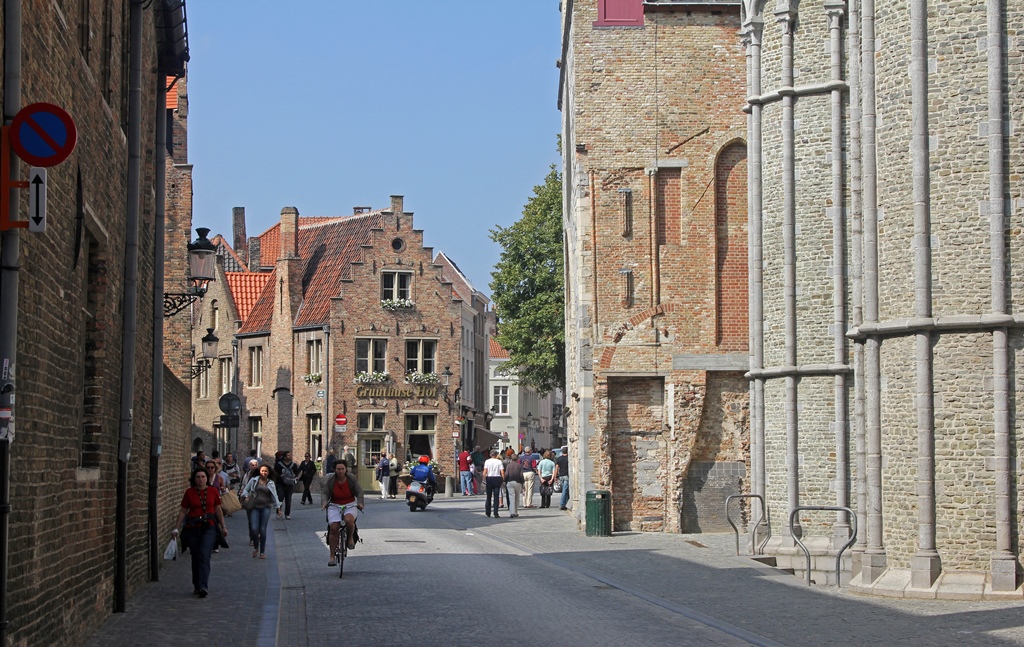
Gruuthuse Hof
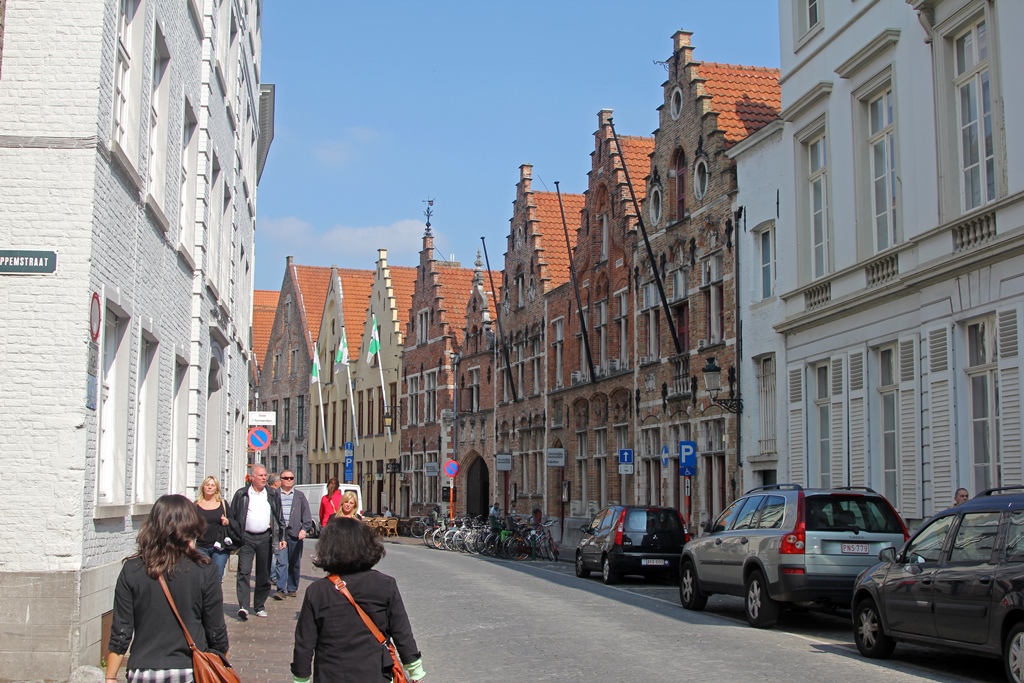
Connie and Nella on Oude Burg
Near the Markt square was another square called the Burg, which held some
attractive former government buildings and a church called the Holy Blood
Basilica. This church has a relic vial of Christ’s blood (hence the church’s
name) and another regulation against the taking of pictures.

Entering Burg Square
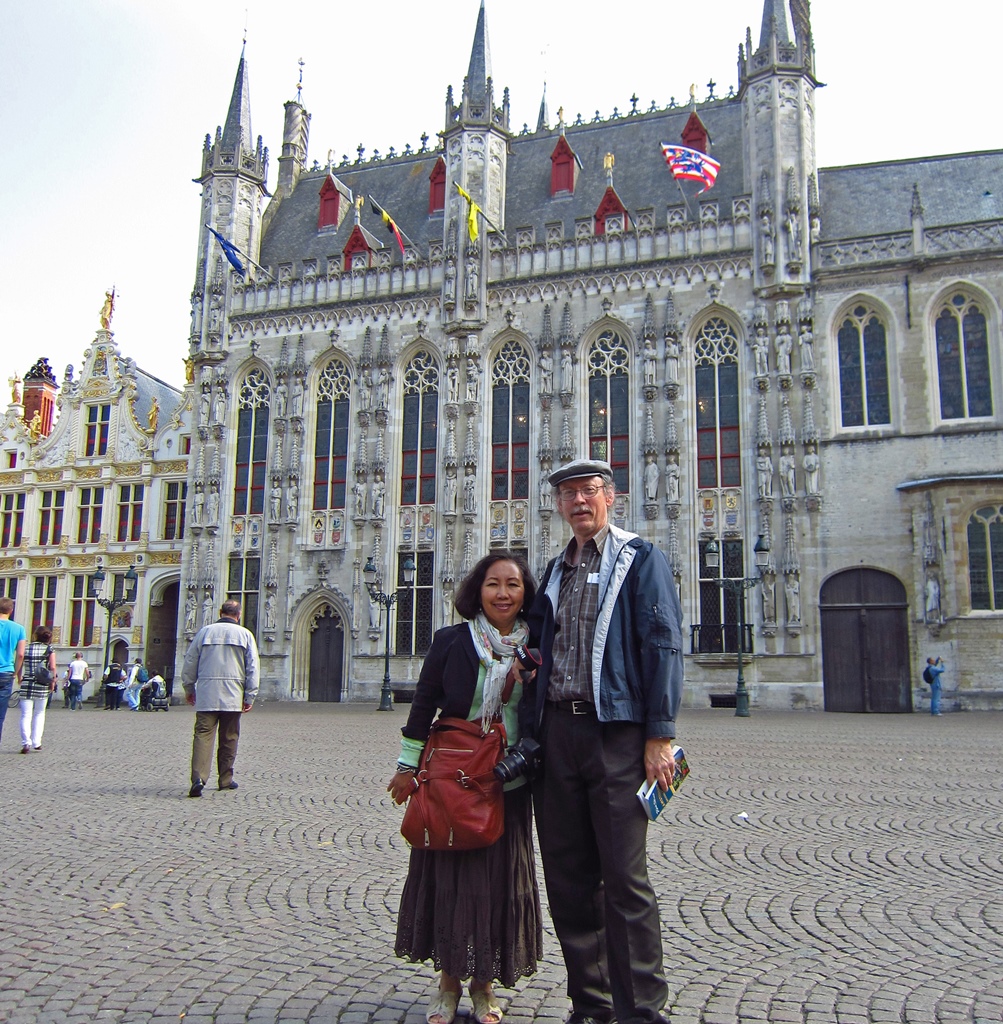
Nella and Bob and Town Hall
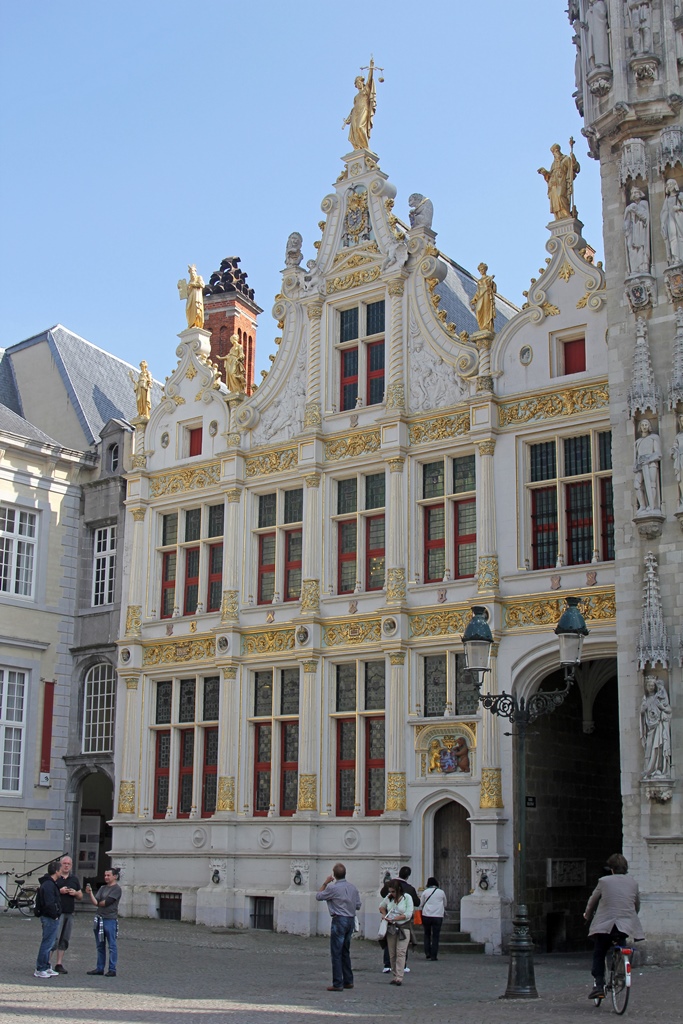
Old Civil Registry Building
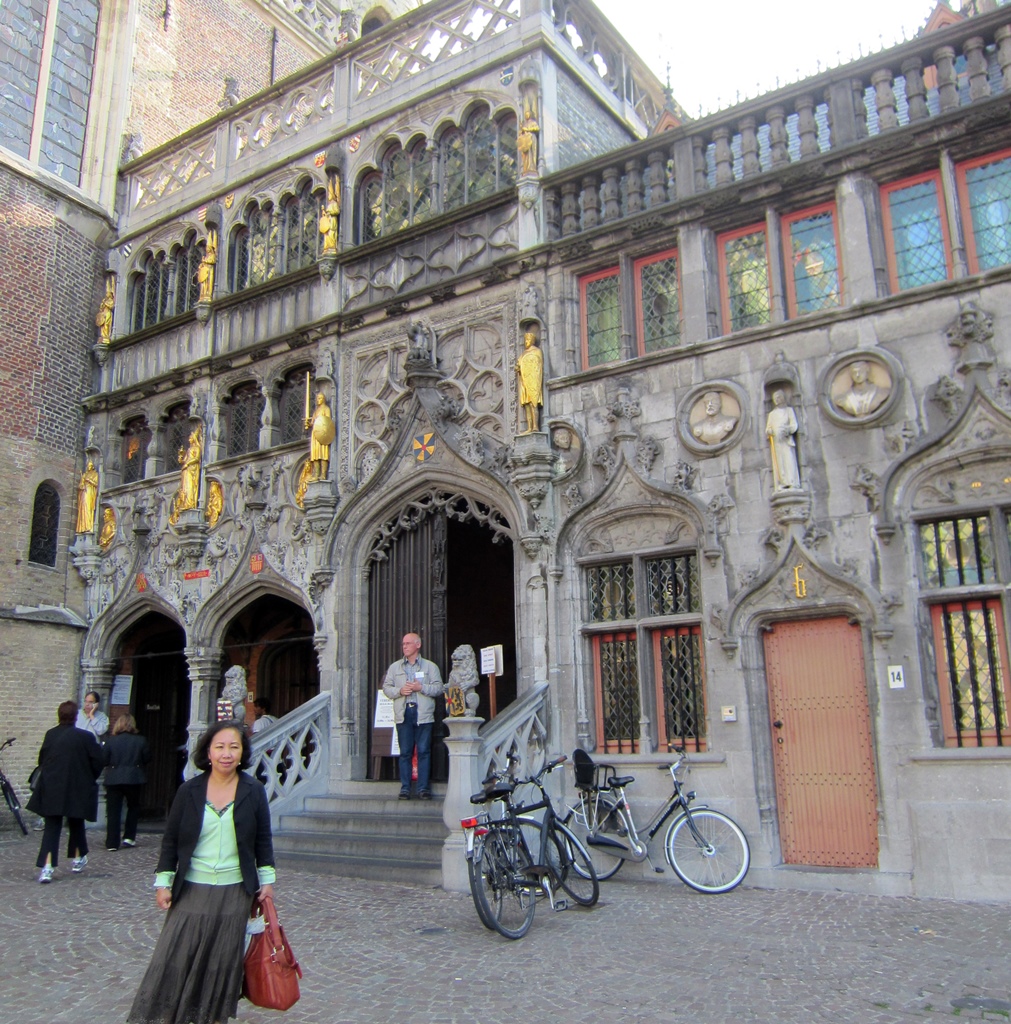
Nella and Holy Blood Basilica
Bob Embarrasses the Family
From the Burg we headed over to the Choco-Story Museum, which is a museum all about
chocolate. There are exhibits describing the history of chocolate and showing some
of the serving pieces that could be used in its consumption. There was also a
chocolate-making demonstration (with samples) and some sculptures showing what could
be done with massive amounts of chocolate.
Choco-Story
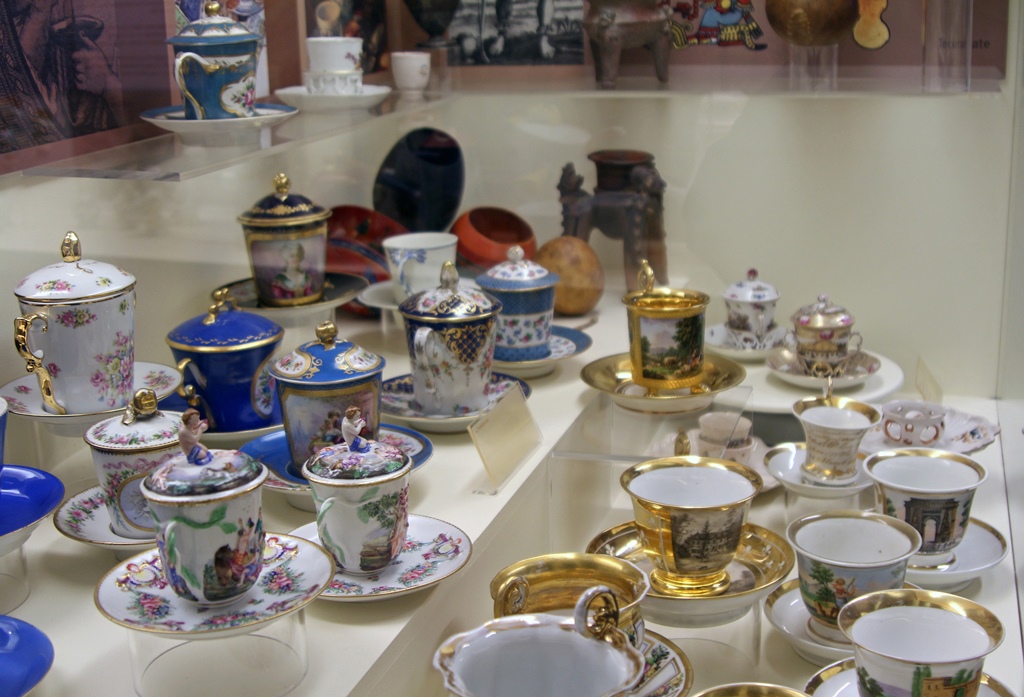
Teacups
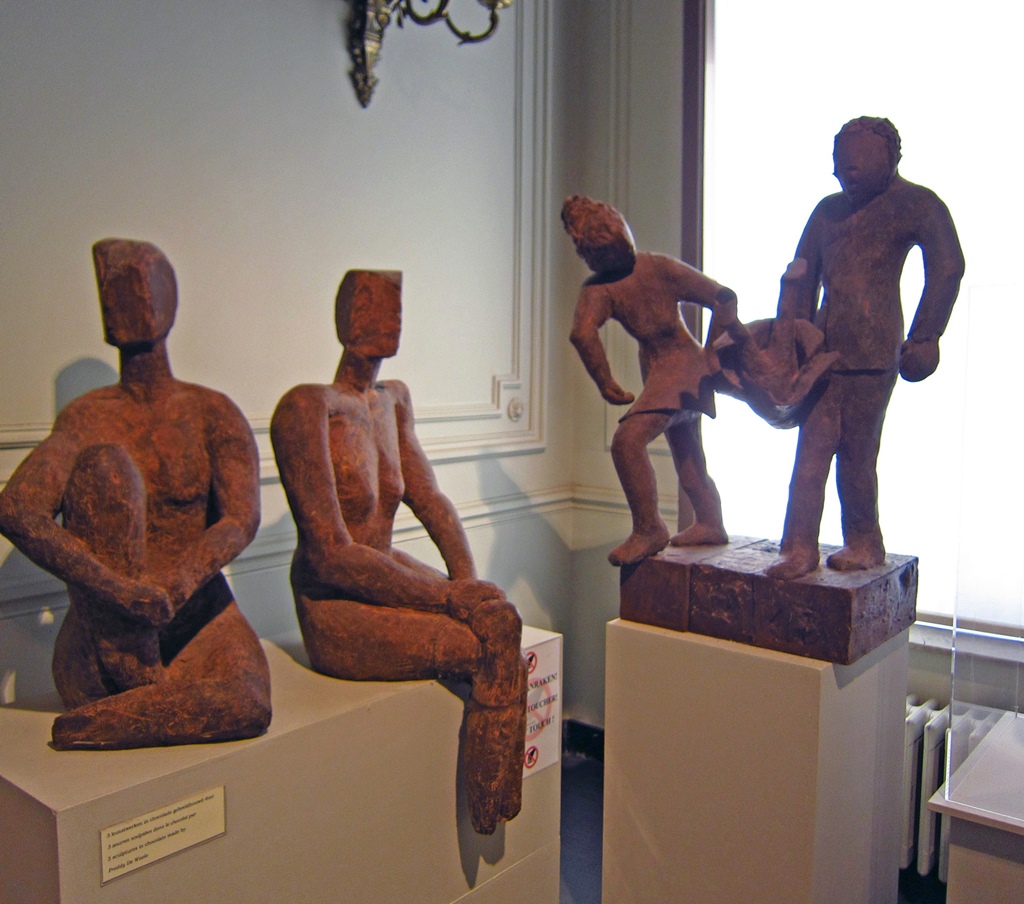
Figures Made of Chocolate
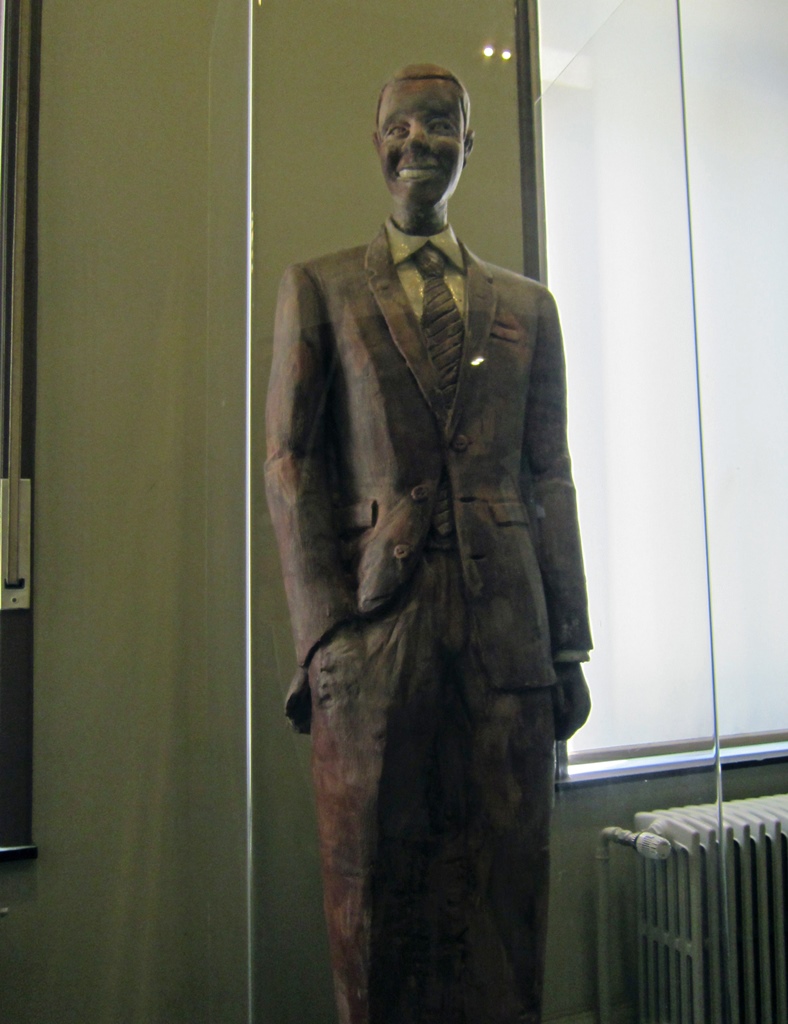
Figure Made of Chocolate
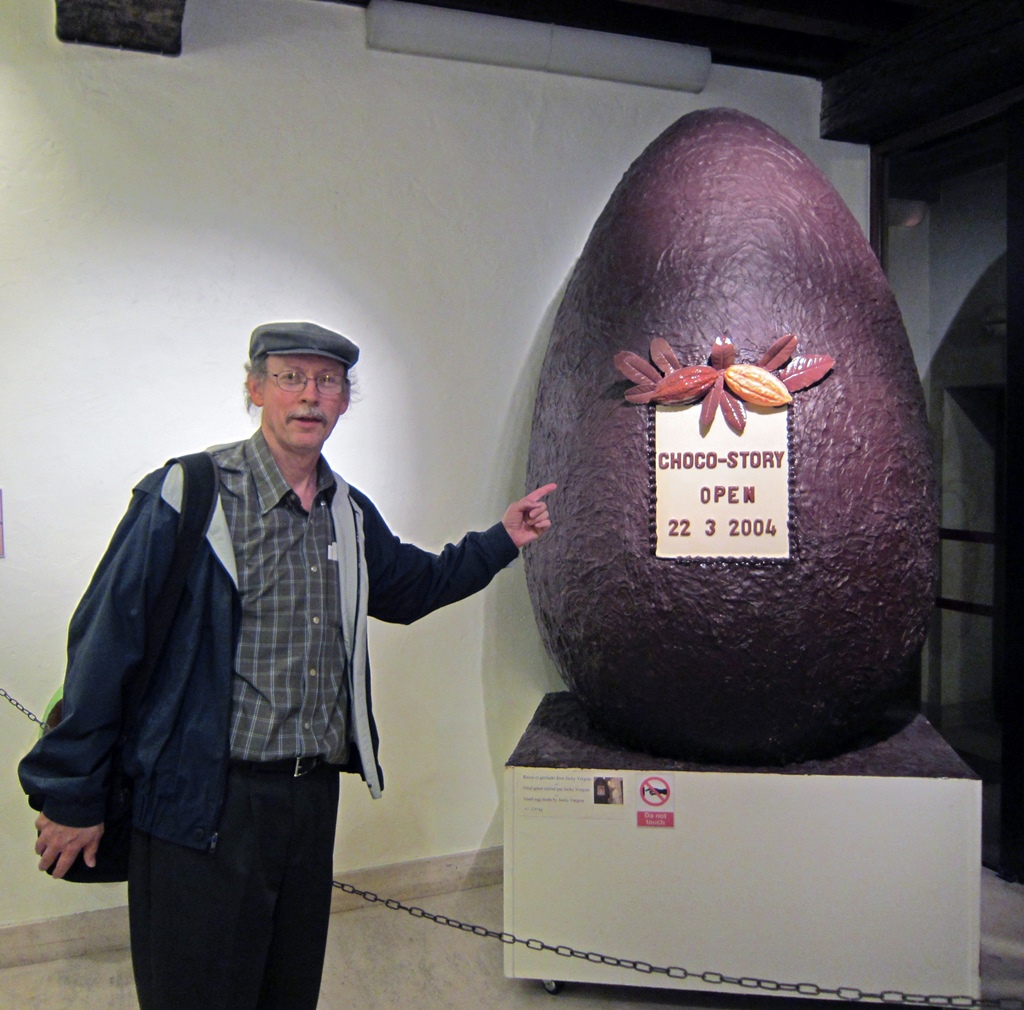
Bob and Gigantic Chocolate Egg
From the Choco-Story museum we headed back to the Markt square to take a closer
look at the Belfry.
The Belfry was originally built in 1240. The upper octagonal portion was added in
the 15th Century. There were some attempts at a wooden spire, but they kept getting
struck by lightning, and eventually the city fathers gave up on this idea. But the
Belfry is certainly tall enough, its height and central location making it visible
throughout much of the city. It’s possible to buy tickets to walk up to the top of
the tower, but time and fatigue convinced us to forgo this endeavor. There is,
however, a courtyard inside the former market hall at the tower’s base, and we did
go in there to see what there was to see. Not much as it turned out, but we found
some benches where we rested our feet for a bit.
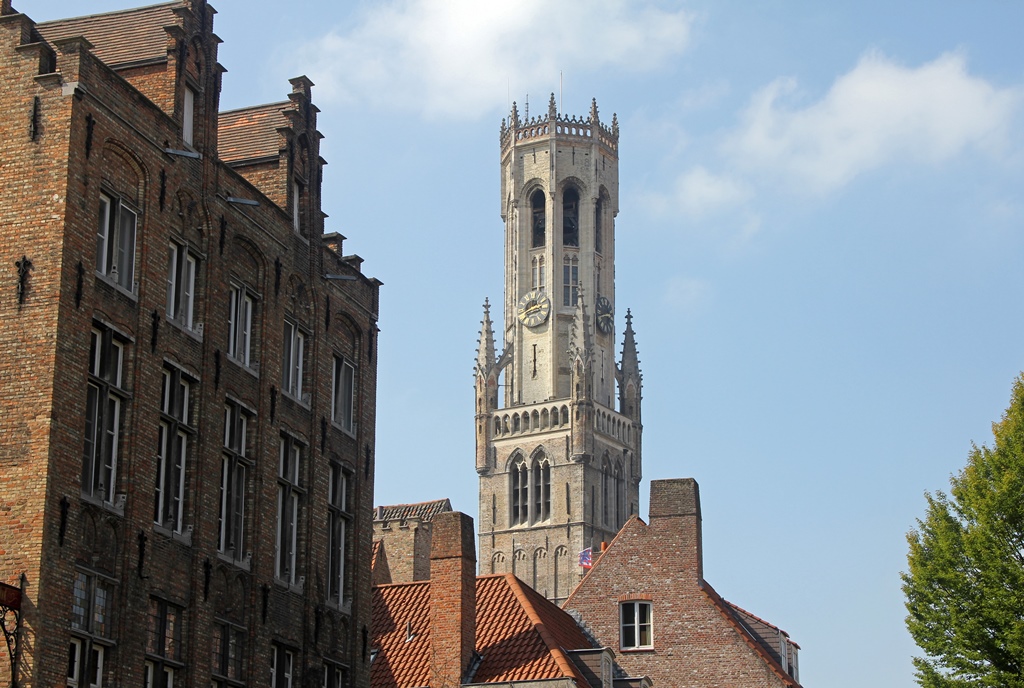
The Belfry
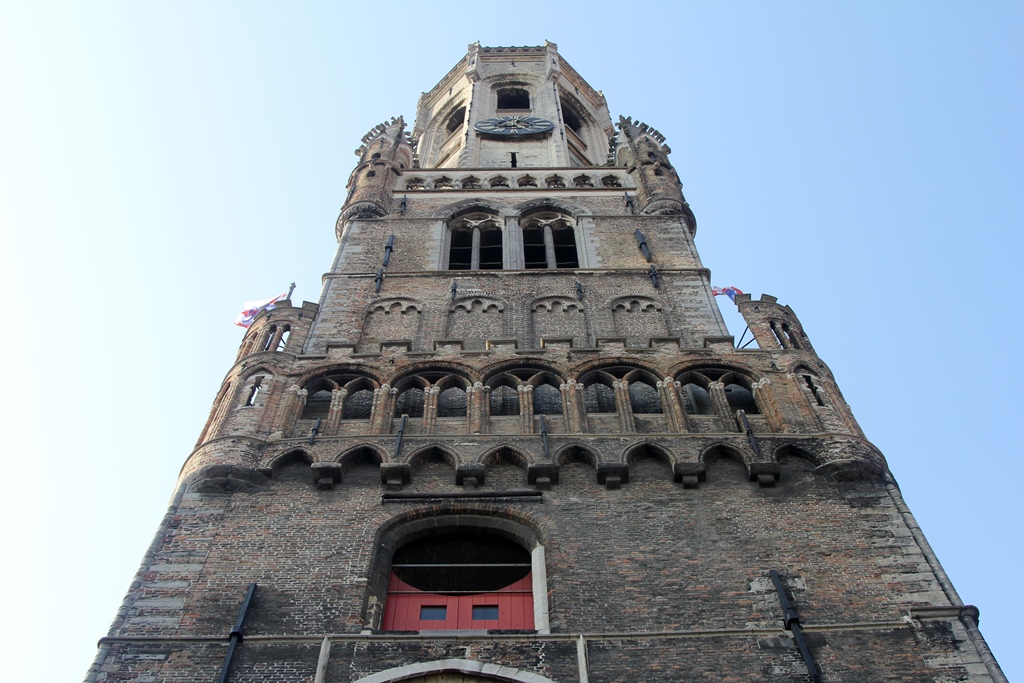
Belfry from Courtyard
Belfry Courtyard
The Belfry is famous for its bells, of which there are 47. The bells can be
played with a carillon located in the tower, and a carilloneur who gives regular
concerts is on the payroll. The courtyard is a prime location for listening to
these performances, but we weren’t sure when these performances were
scheduled. Sometime other than when we were there.
Refreshed form our break in the Belfry courtyard, we reemerged into the Markt
square and headed south on foot toward the train station.
Markt Square
On the way we passed through a square called the ‘t Zand square, where there
was an interesting fountain which seemed to be nautically themed.
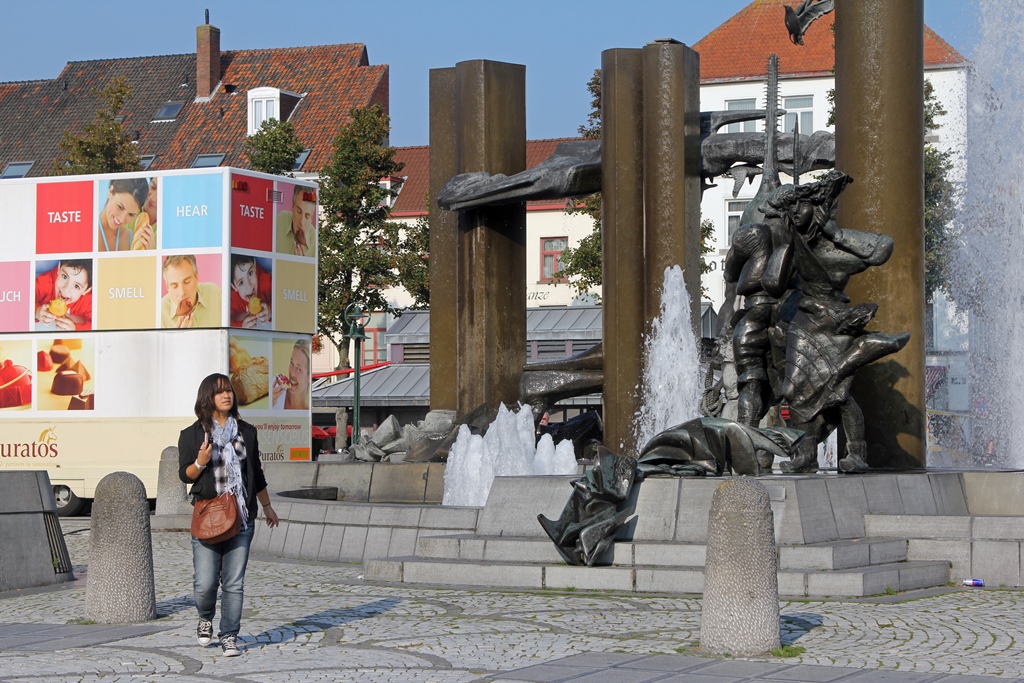
Connie and Fountain (Stefaan Depuydt/Livia Canestraro, 1985)
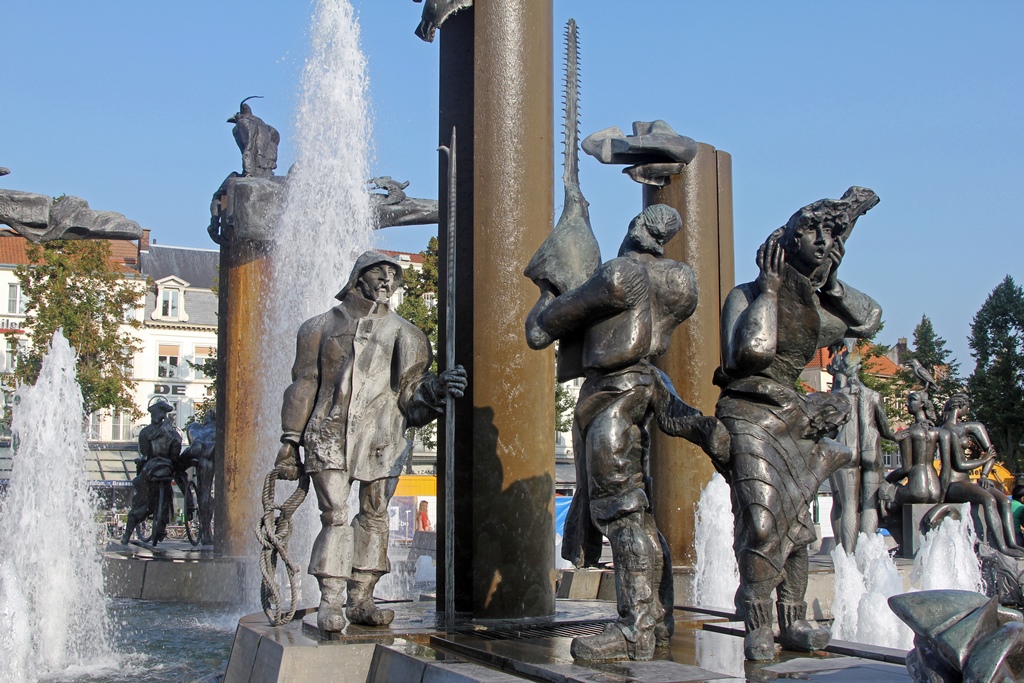
Fishermen
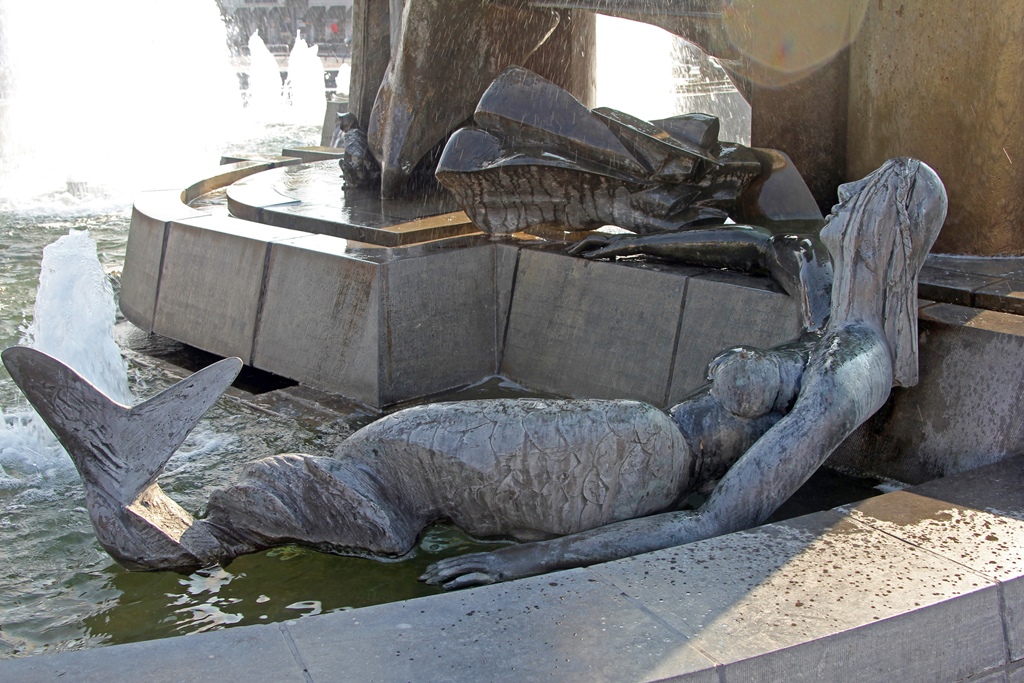
Mermaid
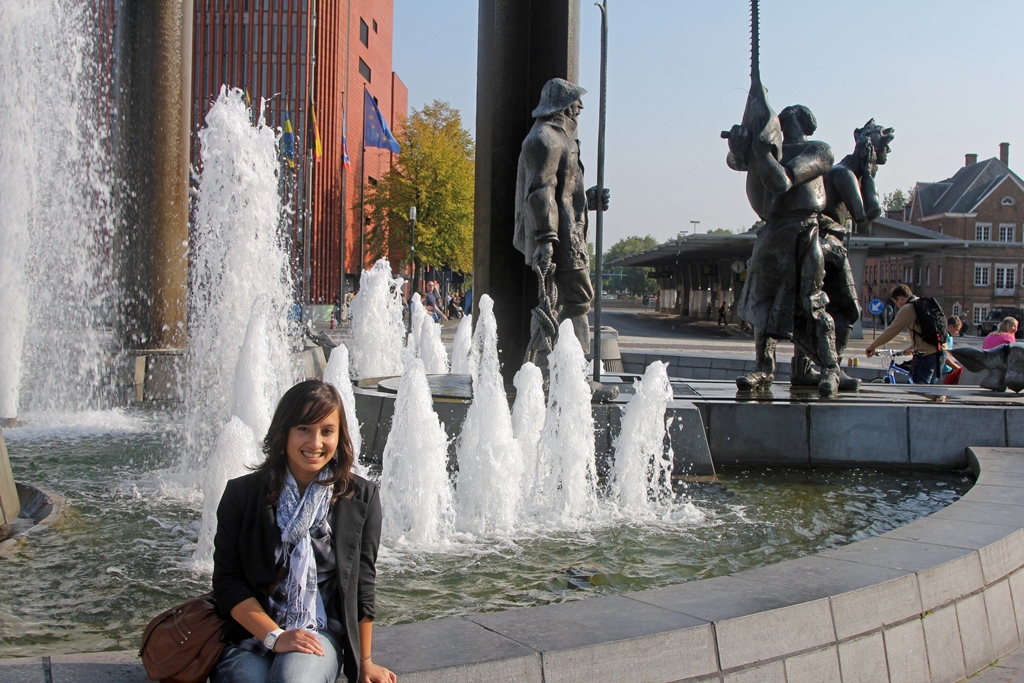
Connie and Fountain
Eventually we reached the train station and returned to Brussels. We found some
dinner and some rest. We had ambitious plans for our last day in the city, which
was to start with a visit to St. Michael’s Cathedral.


